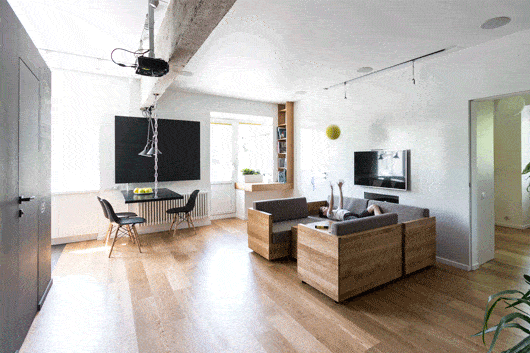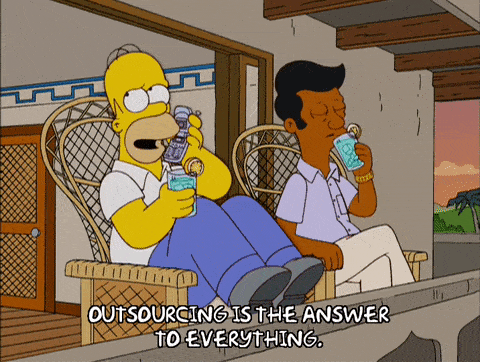
Are you looking to start a small business in Australia? Look no further! We've compiled a list of amazing small business ideas that can truly transform your life. Whether you're based in a rural area or a bustling city like Sydney, Melbourne, or Brisbane, these ideas are tailored to meet the growing demand across various industries. The best part? There's a significant gap in the market just waiting to be filled.
Take a moment to scan through this list and find a few ideas that resonate with you. Once you've narrowed it down, do a bit of research to assess the current market in your area. You'll likely discover untapped opportunities and weak competition, making it easier for you to establish your presence. The great news is that these small business ideas require low start-up costs and come with minimal risk. With the right effort and dedication, success is within your reach.
Table of Contents
Things to Consider Before Starting

One of the key advantages of the small business ideas we present here is their scalability. You can start small and gradually expand your operations as you gain momentum. If you have some funds to invest and time to spare, consider focusing on niche services that promise higher returns right from the start. The more specialised the service, the greater your chances of success.
What's even better is that none of these small business ideas involve selling physical products. Instead, they revolve around providing valuable services that can be further enhanced over time. By choosing a service-oriented approach, you can differentiate yourself from competitors who engage in price wars. Customers are willing to pay a premium for exceptional service delivered promptly. Many businesses in these industries struggle with speed, but that's where you can shine. Leverage your tech skills and basic computer software proficiency to your advantage. Older individuals often run established small businesses in these industries and may not be tech-savvy. By offering quick quotes, implementing job tracking software, and efficient management systems, you can position yourself as a reliable and efficient service provider.
If you're switched on and possess even the most basic computer skills, you already have a significant advantage over your competitors. Embrace the opportunities that technology presents, as many well-established small businesses in these industries are slow to adapt. Their reluctance to embrace technology means they miss out on the benefits of streamlined processes and efficient customer service. By recognising the value of software and technology, you can gain an edge in the market.
Gardening and Landscaping Business Ideas

If you have a passion for plants and enjoy working in the garden, there are exciting business opportunities tailored just for you. These gardening business ideas allow you to turn your love for plants into a rewarding venture.
Whether you excel in landscaping, have a talent for pruning and hedge trimming, or possess a knack for creating stunning gardens, there is a gardening business idea that can transform your green thumb into a thriving enterprise.
From providing professional garden maintenance services to offering expert advice on plant care and design, these opportunities allow you to channel your passion and create beautiful outdoor spaces for your clients to enjoy. With the right skills, knowledge, and dedication, you can cultivate a successful business while doing what you love most—working with plants.
1. Lawn Mowing Business
A lawn mowing business is not something that many people think of turning into a full time small business in Australia. Almost every single person who owns a house has a lawn and a lot of commercial properties have some form of lawn as well. The opportunities are endless to make money with a lawn care business in Australia.
Getting Started
2. Garden Pruning and Hedge Trimming Business
One of the important tasks of garden maintenance in Australia is pruning and trimming of trees. You can charge up to $1,500 for hedge trimming depending on the size and length of the hedge and the condition it is in.
Getting Started
3. Landscaping Business
It doesn’t cost much money to start a small landscaping and gardening business in Australia. All you need is a ute or van, a lawn mower and some small hand tools. The work you take on can range from basic lawn maintenance to detailed design projects.
Getting Started
- How to Start a Landscaping Small Business in Australia
- Setting up a Landscaping Business With No Startup Money
- Basic tools checklist for General Lawn and Gardening
- Get a Website For Your Landscaping Business
4. Tree Trimming Business
Tree trimming and removal service is a growing business trend in Australia. You can tap into this huge industry and start making money by getting some professional tree-care training and knowledge. You might need a license to legally start a tree trimming business in Australia. But, once you have it, you get the green light to help home owners with trimming, pruning, branch & stump removal, and tree maintenance. If you love tree trimming and climbing, this could be the business for you.
Getting Started
- How to Start a Tree Cutting Business
- Tree Cutting Business: Your 10-Point Checklist
- What are Tree Trimming Business Essentials?
- Get a Website For Your Window Cleaning Business
5. Irrigation Business
Irrigation or watering systems is a basic need for most home owners in Australia. You can start an irrigation business and charge customers to install watering systems on their farm land, parks, fields, and home lawns. It is a solid and advantageous business in Australia, and you can make huge profits by going for this option. With the right knowledge and skills, you can start this money-making business right away.
Getting Started
6. Auger Boring Business
Starting an auger boring business in Australia is expensive. You need to have the required skills and knowledge to handle the business. Plus, purchasing machines need a lot of capital. The advantage of auger boring business is, once you set up your company, clients are readily available, which means it is a profitable business.
Getting Started
- What Makes a Great Auger Boring Company
- Requirements for Starting an Auger Boring Business
- How To Find The Right Fit For Your Auger Boring Project
- Get a Website For Your Auger Boring Business
Rental and Delivery Business Ideas

Rental and delivery businesses are becoming really popular because they make things super easy for customers. These businesses let people borrow things they need for a little while without having to buy them. It's a smart choice if you want flexibility and save money.
For example, you can rent tools, equipment, or even cars instead of buying them. And with delivery businesses, you don't have to go out to get what you need. They bring things right to your doorstep, like food or packages.
These businesses are all about making life easier for people. If you're thinking about starting a rental or delivery business, you'll be part of a growing industry that offers convenient solutions for everyone.
7. Skip Bin Rental Business
Living in an untidy place can be very dangerous. You are exposing yourself to diseases and unhealthy living. Skip bin rental business in Australia is very beneficial to homeowners and businesses. Most companies, such as Industrial companies, mining companies, and logging companies, prefer to use skip bin services to eliminate waste materials. These services are highly appreciated, and it makes it an excellent idea to start such a business.
Getting Started
- How to Start a Skip Bin Rental Business
- Tips for Starting a Skip Bin Rental Business
- Requirements to Start a Skip Bin Rental Business
- Get a Website For Your Skip Bin Rental Business
8. Portable Toilet Rental Business
When you eat, digestion is going to take place. After digestion, what happens next? Yes, this happens to everyone. So your idea of starting a porta potty rental business might be the solution to most people. In Australia, you hardly miss a weekend without a party. It could be a wedding, birthday celebration, or a graduation party. Take advantage of all these events to rent out toilets.
Getting Started
- How to Start a Portable Potty Rental Business
- Tips to Help You Start-up an Excellent Porta Potty Rental Business
- Equipment Required to Start a Porta Potty Rental Business
- Get a Website For Your Porta Potty Rental Business
9. Firewood Delivery Business
The only things you need to start up a firewood delivery business in Australia is a place to store bulk amounts of cut wood and a large enough vehicle to deliver it. You don’t even have to cut it yourself. Just buy firewood in bulk from a lumber mill and sell it on to the customer. This completely cuts out the hard labour.
Getting Started
- Starting a Firewood Delivery Business in Australia
- Laws for Selling Firewood in Australia
- Firewood Delivery Business Ideas and Tips
- Get a Website For Your Firewood Delivery Business
Home Improvement Business Ideas

Home improvement businesses are all about making homes better! They help people fix things, make changes, and create beautiful spaces. Handyman services are great for fixing all sorts of problems around the house, like leaky faucets or squeaky doors.
Some businesses specialise in remodelling kitchens and bathrooms, making them look brand new. Others focus on installing new floors or restoring old ones to make homes more cozy. There are so many ways to improve homes and make them special places to live!
10. Pest Control Business
Starting a pest control business in Australia will be very profitable. Most small pest control business owners make over $80,000 a year. There will always be pests getting into peoples homes and those people need someone to get rid of them.
Getting Started
- Starting a Pest Control Business in Australia
- Pest Control Licensing in Australia
- Essential Equipment for Your Pest Control Business
- Get a Website For Your Pest Control Business
11. Fence Installation Business
The fence installation business is a booming business in Australia. If you enjoy working outdoors and care about other people’s security, then the fence installation business is fit for you. Moreover, security is not the only reason for fencing; beauty can as well be a reason. There are those people who fence their homes in seasons for beauty purposes. All you will do is get contracts with homeowners and corporations, and your business will grow within a short period.
Getting Started
- 9 Steps on How to Start a Fence Installation Business
- How to Run a Fencing Business
- Materials Needed for Fence Installation
- Get a Website For Your Fence Installation Business
12. Garage Door Service and Installation Business
A garage door service and installation business involve installing new garage doors, repairing, replacing existing doors, and requiring large capital to start. If you are thinking of creating such a business, you need to prepare yourself psychologically and financially. However, once you start, it can give good returns, and it is less competitive as not many people have the knowledge nor capabilities to start the same business.
Getting Started
- How to Start a Garage Door Service and Installation Business
- Tips to Understand before Starting a garage Door Service and Installation Business
- Get a Website For Your Garage Door Service and Installation Business
13. Mirror Installation Business
Mirrors have several functions when installed. They give light as decoration, and when opened, they allow fresh air. This shows how essential mirrors are, so why not take advantage and start a mirror installation business if you possess the right skills. It can be a profitable business with high demand.
Getting Started
- Requirements Needed to Start a Mirror Installation Business
- How to Start a Mirror Installation Business
- How to Become an Expert Mirror Installer While Starting your Business
- Get a Website For Your Mirror Installation Business
14. Custom Lighting Installation Business
Who does not love good lighting, whether it is indoor or outdoor lighting? The lighting installation business involves fixing light bulbs and tubes to enhance good lighting when dark. Opening a custom lighting installation business is an excellent idea since many people have zero knowledge of installing.
Getting Started
- How to start a Custom Lighting Installation Business
- Tools Needed for Custom Lighting Installation Business
- How to Start Your Own Lighting Business with a Small Investment
- Get a Website For Your Custom Lighting Installation Business
15. Custom Wallpaper Installation Business
Custom wallpaper installation business involves the covering of walls with wallpapers using your designs. If you are an interior designer, this is an excellent opportunity for you as most people love beautiful houses. You can offer your services by installing wallpapers that suit their preferences.
Getting Started
- How to Start a Custom Wallpaper Installation Business
- Equipment for Starting a Custom Wallpaper Installation Business
- Lessons to Learn Before Starting a Custom Wallpaper Installation Business
- Get a Website For Your Custom Wallpaper Installation Business
16. Interior Painting Business
Unlike the exterior painting, interior painting needs more focus and attention. You need to consider colours that will enhance enough like, appealing, and match with other equipment such as chairs, curtains, and carpet. You need to have enough experience before starting an interior painting business.
Getting Started
- How to start an interior painting business
- Tools for Starting an Interior Painting Business
- How to Market an Interior Painting Business
- Get a Website For Your Interior Painting Business
17. Exterior Painting Business
External painting involves covering the outside walls of a building with paint, whereby you can use several colours to bring out the theme anticipated. As an exterior painter, take advantage of the opportunity by opening an exterior painting business, and it is a decision you will never regret as this business is in high demand in Australia, especially on commercial buildings
Getting Started
- How to Start an Exterior Painting Business with Low Budget
- Requirements Before Starting an Exterior Painting Business
- Tips on How to Run a Successful Exterior Painting Business
- Get a Website For Your Exterior Painting Business
18. Deck Staining Business
Restoring and staining decks is the right choice to make home exteriors beautiful. Be it a porch, backyard, entrance, or garden area, decks should be neat and clean always. Deck staining is one of the budding businesses in Australia, and you can make considerable profits from this business. If you have the experience, knowledge, passion, and the right tools, this business is definitely a go.
Getting Started
- Deck Restoration:A Step-by-step Beginners Guide
- The Top 5 Deck Staining Tips from the Experts
- DIY Staining a Deck
- Get a Website For Your Deck Staining Business
19. Residential House Painting Business
A house painting business can be pretty cheap to start up in Australia. All you need is some paint, a ladder, covers and the brushes to put the paint on the walls. You could easily get everything you need for under $1000 and start selling your services.
Getting Started
- How to Start a Residential House Painting Business
- Pros and Cons of Starting a Residential House Painting Business
- How to Paint a Room, Tools and Materials
- Get a Website For Your Residential House Painting Business
Cleaning Business Ideas

If you love to clean and keep things tidy, there are many business ideas that you can try! You can start a house cleaning business where you go to people's homes and make them sparkle and shine. Cleaning windows is another option, making them crystal clear and letting in lots of light.
No matter what type of cleaning you enjoy, there are lots of opportunities to turn your passion into a successful business!
20. Fire Damage Restoration Business
The fire damage restoration business is a business you can operate from home. It involves assisting those affected by the fire to repair the damage caused. Small fire accidents are likely to happen, so you will most likely find people you can help restore the damage. Also, you can put some preventive measures to protect such an incident from reoccurring.
Getting Started
- Tips on Starting a Fire damage Restoration Business
- Tips on the Process to Restore Damage Caused by Fire
- What to Know Before Starting a Fire Damage Restoration Business
- Get a Website For Your Fire Damage Restoration Business
21. Home Odour Removal Business
Home odours are a common thing having caused by dust, smoke, pet odours, and trash. Now and then, people want to remove these odours to keep their houses fresh. Starting a home odour removal business can be an excellent idea. You get to employ yourself; all you need are the equipment necessary for the job.
Getting Started
- How to Start a Home Odour Removal Business
- Basic Products for Home Odour Removal Business
- Steps on How to Start a Home Odour Removal Business
- Get a Website For Your Home Odour Removal Business
22. Gutter Cleaning Business
Gutter cleaning is a profitable opportunity for those who wish to earn more money in a short period. Because it is a seasonal business in Australia, the demand can be extremely high sometimes. You can opt for this business, if you have necessary equipment, techniques, and passion to do this dirty-dangerous job. There are endless opportunities in gutter cleaning business in Australia.
Getting Started
23. Maid Services Business
House chores are tiresome, especially for people working from home at office desks. They tend to hire someone to assist them with the tasks. It is a booming business in Australia, and it may be a perfect choice starting a maid services business.
Getting Started
- How to Start a Maid Services Business
- Do this when starting your maid service business
- Steps to a Successful Maid Service Business
- Get a Website For Your Maid Service Business
24. Carpet Cleaning Business
Nowadays, carpets have become a necessity in every home. Meaning carpet-cleaning business is in high demand. You might need to take advantage of the opportunity by asking people to hire you to clean their carpets. You can start with practically zero cents, as it is an affordable business.
Getting Started
25. Graffiti Removal Business
The graffiti removal business is a business associated with removing unwanted graffiti from buildings and other surfaces. It requires less capital to start since you will only need to purchase a pressure washing machine and paint to repaint the area.
Getting Started
26. Mould Removal Business
The mould removal business involves working on the disasters that floods cause. With the current natural disasters happening, one needs adequate preparations in case something happens. It is a perfect idea to start a mould removal business, as it is an ideal business to earn your income in Australia.
Getting Started
- Requirements Needed Before Starting a Mould Removal Business
- How to Start a Mould Removal Business
- How to Market a Mould Removal Business
- Get a Website For Your Mould Removal Business
27. Pool and Spa Cleaning Business
Pool and spa cleaning is a solid, profitable market in Australia. With more than 2 million residential pools, Australia can be the best place to take your business off the ground. Once you get the business technicalities and right knowledge, you can start out making enough money. All you require is some advanced products and equipment to be a part of this pool cleaning industry.
Getting Started
28. Window Cleaning Business
Starting a window cleaning business in Australia is an absolutely great venture for those who wish to be their own boss. You can start this business in Australia without a huge establishment cost. You just need is few simple tools, equipment and get insured. Follow the latest window cleaning technology to offer the best-quality services. Switching to window cleaning can be your next great career move, go for it today.
Getting Started
- How to Start a Profitable Window Cleaning Business
- How to Start a Window Cleaning Business
- Thinking of Starting a Window Cleaning Business? Read this first
- Get a Website For Your Window Cleaning Business
29. Pressure Washing and Concrete Cleaning Business
Starting a pressure washing business and concrete cleaning business in Australia can almost never go wrong. You don’t need any special certificates and the training will take you very little time. The upfront expenses are very low, all you need is a good quality pressure washer to get started. Once you are up and running there isn’t really much more you will need.
Getting Started
- How to Start a Pressure Washing and Concrete Cleaning Business
- Equipment Needed to Start a Pressure Washing and Concrete Cleaning Business
- Income Potential of a Pressure Washing and Concrete Cleaning Business
- Get a Website For Your Pressure Washing and Concrete Cleaning Business
30. Water Damage Restoration Business
Water pipe bursting is an everyday occurrence in most homes. The damage it causes needs fixing, and that is where you come in. with a water damage restoration business, you will assist in resolving the damage; in return, you earn a living. It is an excellent business since you can operate it from the comfort of your home.
Getting Started
- How to Start a Water Damage Restoration Business
- Tips on How Water Damage Restoration Business Work.
- Requirements for Starting Water Damage Restoration Business
- Get a Website For Your Water Damage Restoration Business
31. On Demand Cleanup Crew Business
Everyone loves a tidy place, whether at home or at the office. Unfortunately, not so many people want to do the cleaning work. Your idea of starting a cleaning business will be an excellent opportunity for you and the customers. It can offer good returns when you know how to connect with people and be great at what you do. In Australia, the cleaning business is popular with diverse options to choose from, for example, warehouses, houses, offices, retail shops, and storefronts.
Getting Started
- How to Launch a Successful Cleaning Business
- How to Start a Cleanup Business
- 8 Bases to Start a Cleaning Business in Australia
- Get a Website For Your On Demand Cleanup Crew Business
Work From Home Business Ideas

If you prefer to work from the comfort of your own home, there are plenty of business ideas that you can explore! One option is to become a virtual assistant, where you can provide administrative support to clients remotely. Another idea is to start an online tutoring business, helping students with their studies through video calls and online resources. If you have a creative side, you can offer freelance services such as graphic design, writing, building topnotch backlinks or website development.
You could also consider starting a home-based bakery or catering business, sharing your delicious treats with others. There are also opportunities to become an online seller by creating your own products or reselling items through platforms like Etsy or eBay.
With determination and a bit of creativity, you can find a work-from-home business idea that suits your skills and interests!
32. Bookkeeping Business
If you are perfect in numbers, then consider starting a bookkeeping business. Most businesses in Australia require bookkeepers. Opening a bookkeeping business, you will be advertising your services to clients. Despite the company taking much of your time, you will be earning a good figure. An Australian bookkeeper charges an average rate of $60-$65 per service hour.
Getting Started
- 8 Steps on How to Start a Bookkeeping Business
- Tips for Starting a Bookkeeping Business
- Services to Offer in a Bookkeeping Business
- Get a Website For Your Bookkeeping Business
33. Vacation Rental or Airbnb Management Business
the vacation rental industry is taking off in Australia with more people than ever renting out their homes on Airbnb. Offering to manage all the work that is involved with renting a property can be very profitable. Running a vacation rental or Airbnb management business in Australia involves finding new rentals, looking after the day to day workings of the rentals, advertising and actually renting out these homes to travellers.
Getting Started
Car and Boat Business Ideas

If you have a passion for cars or boats, there are several business ideas you can explore in these industries. You could start a car detailing business, where you clean and polish cars to make them look brand new. Another idea is to offer mobile car repair services, where you can travel to clients and fix minor issues with their vehicles. If you're skilled in mechanics, you could start an auto repair shop and offer services like oil changes, brake repairs, and engine diagnostics.
For boat enthusiasts, you could consider starting a boat cleaning and maintenance business, providing services such as hull cleaning, waxing, and engine maintenance. Additionally, you could offer boat rental services, allowing people to enjoy a day out on the water without owning a boat themselves.
With these car and boat business ideas, you can combine your passion with entrepreneurship to create a successful venture.
34. Boat Cleaning Business
Most boat owners enjoy the luxury that it comes with it, but it becomes a different case when it comes to cleaning. For this significant reason, if you have the skills as a boat cleaner, you think of investing in the boat cleaning business, this is a perfect time. An advantage of the business is it does not have high competition, and the profits are high.
Getting Started
- How to Start a Boat Cleaning Business on a Tight Budget
- A Business Plan Sample as a guide on How to Start a Boat Cleaning Business
- Tips to a successful boat cleaning business
- Get a Website For Your Boat Cleaning Business
35. Boat Repair and Maintenance Business
Most people who own boats mostly have zero knowledge when it comes to service and repairs. As a boat mechanic, this would be an excellent opportunity to earn a living. The boat repair and maintenance business can be very profitable, mainly because the competition is low.
Getting Started
- How to Start a Boat Repair and Maintenance Business
- 15 Essential Tools For Boat Repair and Maintenance Business
- Tips to Offer Clients as a Boat Repair and Maintenance Business Owner
- Get a Website For Your Boat Repair and Maintenance Business
36. Caravan and Motorhome Cleaning Business
Starting a caravan & motorhome cleaning business is very cheap. It is a business that takes less than 20hrs weekly. Plus, it offers good returns. All you need is to talk to your neighbours who own one caravan or motorhome, and you are good to go. The business does not require any certification, hence suitable for everyone.
Getting Started
- How to Start a Caravan & Motorhome Cleaning Business
- Tools for Cleaning a Caravan & Motorhome
- Learn how to wash and maintain a caravan & Motorhome before starting your business
- Get a Website For Your Caravan and Motorhome Cleaning Business
37. Mobile Oil Change Business
Mobile oil change business is a business with a ready market. It involves providing quick oil changes and basic automotive services at clients sites. Starting a mobile company may earn you handsomely. So get your hands dirty for a good course.
Getting Started
- How to Start a Mobile Oil Change Business
- Cost of starting a mobile oil change business
- A Guide to Start a Mobile Oil Change Business
- Get a Website For Your Mobile Oil Change Business
38. Mobile Tyre Sales and Service Business
Tyre sales and service business is a profitable business in Australia. Most people own vehicles, and with the wear and tear of tyres, it makes the tyre and service business more popular. Mobile businesses have an advantage since they do not have to worry about rent and space.
Getting Started
- How to Start a Mobile Tyre Sales and Service Business
- Tools Needed For Starting Up a Tyre and Service Business
- Legal Advice on Starting a Mobile Tyre Sale and Service Business
- Get a Website For Your Mobile Tyre Sales and Service Business
39. Mobile Glass Repair Business
Glass-made commodities are fragile and require repair now and then. If your capabilities allow you to repair glass properties, it is high time to create the business. Use your passion to generate income as well as grow your career.
Getting Started
- How to Start a Mobile Glass Repair Business
- Why Think of Starting a Mobile Glass Repair Business
- 7 Guidelines to a Mobile Glass Repair Business
- Get a Website For Your Mobile Glass Repair Business
40. Mobile Car Detailing and Washing Business
There is an endless amount of people around you who have nice cars that are dirty and they have no time to take them to a car detailer. By being mobile and coming straight to them you are providing a highly valuable service. A one-person mobile car detailing and washing business in Australia can make over $90,000 per year. All you need to get started is cleaning products and a car to get around.
Getting Started
- How to Start a Mobile Car Detailing and Washing Business From Scratch
- 10 Tips for Starting a Car Detailing and Washing Business
- Equipment & Supplies Needed to Start a Mobile Car Detailing and Washing Business
- Get a Website For Your Mobile Car Detailing and Washing Business
41. Mobile Car Mechanic Business
Australia has huge lengths of highway all over the country where people can break down. Mobile mechanics make car repairing jobs easier by offering mobile repairs at your home, workplace, or anywhere else you might be having car troubles. From checks and oil change to complete vehicle servicing, skilled car mechanics in Australia bring equipment right to the spot where your car breaks down, saving a huge amount on a towing service. You can start a mobile car mechanic business to offer customers the convenience a normal mechanic shop cant.
Getting Started
- How to Start a Mobile Mechanic Business
- Things you Need to Start a Mobile Mechanic Business
- How and Why You Should become a Mobile Mechanic
- Get a Website For Your Mobile Car Mechanic Business
Creative Business Ideas

If you have a creative spirit and love to express yourself artistically, there are plenty of business ideas that can harness your creativity.
You could start a custom artwork business, where you create personalised paintings, drawings, or sculptures for clients. Another option is to offer graphic design services, helping businesses with logo design, branding materials, and marketing collateral. If you enjoy crafting, you could start a handmade jewellery or accessories business, creating unique and one-of-a-kind pieces. Photography is another creative avenue to explore, where you can offer your services for events, portraits, or product photography. If you have a flair for writing, consider starting a freelance writing or copywriting business, helping businesses with website content, blog posts, or marketing materials.
Whether it's through visual arts, design, crafts, or writing, these creative business ideas allow you to showcase your talents and make a living doing what you love.
42. Interior Design Business
Interior design involves decorating a house or office from the inside, starting from walls, household equipment, and lighting facilities. To start an interior design business, you need specific skills to bring out your clients’ tastes and preferences to their satisfaction.
Getting Started
- How to Start an Interior Design Business
- Skills you Need Before Starting an Interior Design Business
- Steps on How to Launch an Interior Design Business
- Get a Website For Your Interior Design Business
43. Home Office Fit Out Business
Most people have a problem with rental spaces since they appear smaller in most cases, and it isn’t easy to arrange them. You can start a home office fit-out business where you will be assisting people in organising their luggage in a manner they can fit in that small space. It’s no secret a lot of people suffer from this kind of problem. If you offer your services, you will be helping them feel more comfortable, and in return, they will be willing to pay a reasonable price for the service.
Getting Started
- Tips on How to Set-Up Home Office fit-out Business
- Tips for a successful Home office fitout
- Benefits of Starting a Home Office Fit Out Business
- Get a Website For Your Home Office Fit Out Business
Safety and Security Business Ideas

If you have a passion for safety and security, there are various business ideas that can help keep people protected.
One option is to start a home security installation business, where you can help homeowners install alarm systems, surveillance cameras, and secure locks. Another idea is to offer personal safety training, teaching self-defence techniques and safety protocols to individuals and organisations. You could also consider starting a cybersecurity consulting business, helping businesses safeguard their digital assets and protect against cyber threats. Another opportunity is to provide safety equipment and gear, such as helmets, safety goggles, or protective clothing, by starting a safety equipment supply business. Additionally, you could offer security guard services, providing trained personnel to protect events, properties, or individuals.
These safety and security business ideas allow you to contribute to the well-being of others and provide peace of mind in an increasingly uncertain world.
44. Locksmith Business
A locksmith business involves designing, fixing, and repairing of locks. Every building contains doors. This makes the locksmith business very lucrative and profitable. If you dream of starting such a business, you are on the right track.
Getting Started
- How to Start a Locksmith Business
- Equipment Needed To Start a Locksmith Business
- Qualifications needed to be a professional locksmith
- Get a Website For Your Locksmith Business
45. Manned Home Security Services Business
If you have been in the security or military sectors before, this is the perfect business for you to run. You have the skills needed to handle any threats that come in people’s way and possess knowledge of where many risks occur and how to avoid them. It would help if you focused on putting your clients at ease by offering the maximum security quality and being reliable. Consider targeting big business entities and event organisers as your primary clients to gain popularity. Train your staff to be honest and responsible for maintaining a good reputation in the market.
Getting Started
- How to Start a Manned Home Security Services Business
- Follow these steps to create a security services business successfully
- Strategies on How to Start a Manned Home Security Services Business
- Get a Website For Your Manned Home Security Services Business
46. Private Investigating Business
A private investigating business involves assisting people in legal, financial, and personal matters. In case you want to start such a business, one needs to know how to run these fields to avoid unlawful acts and give the clients the best services. The structure of the company can be a corporation or a Limited Liability Company. Consider setting up a legal entity to avoid personal liability with the law.
Getting Started
- How to Start a Private Investigating Business
- Instructions needed to start a private investigation business
- Requirements and Tips Needed To Start and Run a Private Investigating Business
- Get a Website For Your Private Investigating Business
47. Gate and Keypad Entry Installation Business
Security is essential; hence, every homestead contains a gate. With the appropriate knowledge of installing gate and keypad entry, you can start a gate and keypad entry installation business. It is a good business with less competition and highly profitable.All you need a handyman experience to operate this business. Your clients can be homeowners, real estate agents, small or large firms; hence, operations flexibility is essential. Quality of service delivery will determine the growth and expansion of your business. Ensure to purchase materials needed from reputable suppliers to avoid malfunction of the systems and low reviews from clients.
Getting Started
- How to Start a Gate and Keypad Entry Installation Business
- Benefits Associated with Starting a Gate and keypad Installation Business
- Tips For Setting Up Your Own Gate And Keypad Entry Installation Business
- Get a Website For Your Gate And Keypad Entry Installation Business
Business Ideas for Animal Lovers

If you have a deep love for animals, there are several business ideas that allow you to work with and care for our furry friends.
One option is to start a pet sitting business, where you can offer your services to pet owners who need someone to look after their pets while they are away. You can also consider starting a dog walking business, taking dogs for walks and providing them with exercise and companionship. Another idea is to open a pet grooming salon, where you can offer grooming services such as bathing, haircuts, and nail trims for pets. Additionally, you could start a pet training business, helping pet owners train their dogs or cats to follow commands and behave well. If you have a passion for wildlife, you can even start a wildlife rehabilitation centre, rescuing and rehabilitating injured or orphaned animals.
These business ideas allow you to combine your love for animals with a fulfilling and rewarding career.
48. Pet Training Business
Pets are charming and adorable. Who wouldn’t their pet to be friendly, disciplined, and communicative? In Australia, almost every home owns a pet. A pet training business can be fascinating training people’s pets according to their specifications. Starting a pet training business makes you be your boss.
Getting Started
- How to Start a Pet Business
- Basic Essentials To Know Before Starting a Dog Training Business
- Requirements needed for pet training establishments
- Get a Website For Your Pet Training Business
49. Aquarium Installation Business
The business involves setting up the aquarium, cleaning, maintaining, and feeding the fish. Some clients only need assistance for the aquarium to be set up, while others need assistance to clean it and feed the fish. Ensure you learn more about business and offer help to the customers since most are clueless. Start your business with friends, neighbour’s, colleagues, or relatives as clients and advance to small businesses later as the business grows. Doing this enhances your skills.
Getting Started
- How to Set up an Aquarium Installation Business from Scratch
- How to Start an Aquarium Installation Business
- Learn How to Start and Maintain an Aquarium Properly
- Get a Website For Your Aquarium Installation Business
50. Pet Grooming Business
Pet grooming services are in high demand, and it keeps on increasing. Pet grooming is a very profitable business for anyone offering great service. It needs one to be skilled and experienced in the field. You must be reliable because clients want someone trustworthy to care for their pets. Get to learn how to look after pets, understand their needs, feed them, and keep them safe. Learn these skills ensures that you will offer great services to your customers.
Getting Started
- Easy Guideline on How to Start a Pet Grooming Business
- How to Set Up a Pet Grooming Business
- What You Need To Know Before Starting a Pet-Grooming Business
- Get a Website For Your Pet Grooming Business
51. Pet Minding Business
Pet minding is an excellent business if you want to venture into the animal industry. It is also quite profitable because of the rising demand for pet sitters. It can start as a small business, and you can eventually expand as the business grows. Pet minding business requires one to be skilled and experienced in taking care of animals. It would be best if you learn how to feed, clean and treat them. Pets are delicate animals that need protection and love. Ensure you know more about taking care of animals before you start the business
Getting Started
- How to Start a Pet Minding Business
- Learn the steps to take when you want to start a pet sitting business
- Learn More on How to Start a Successful Pet Minding Business
- Get a Website For Your Pet Minding Business
Fitness and Exercise Business Ideas

If you have a passion for fitness and exercise, there are plenty of business ideas that can help you turn your passion into a successful venture.
One option is to become a personal trainer, where you can work with clients one-on-one to help them achieve their fitness goals. You can offer personalised workout plans, provide guidance on proper form and technique, and motivate your clients to stay committed to their fitness journey. Another idea is to start a fitness class or group training business, where you can lead group exercise sessions such as aerobics, yoga, or boot camps. You can also consider opening a gym or fitness studio, providing a space for people to work out and offering a variety of fitness equipment and classes. Additionally, you could specialise in a specific niche, such as prenatal fitness, post-rehabilitation training, or sports conditioning.
With the increasing focus on health and wellness, there is a high demand for fitness and exercise services, making it a great opportunity to turn your passion into a profitable business.
52. Personal Training Business
Does your dream involve owning a personal training business, such as a gym? You are on the right track. In Australia, this is a popular business that consists of helping people to become fit and healthy. Imagine doing what you love and witnessing other people’s progress; it can be very fulfilling.
Getting Started
- How to Start a Personal Training Business
- Key Aspects before Starting a Personal Training Business
- Items for Starting a Personal Training Business
- Get a Website For Your Personal Training Business
53. Hiking Tours Business
Starting a tour company is profitable and rewarding, however it requires dedication, commitment, persistence, and importantly passion. A hiking business is not costly to startup and you get to meet new friends on the way. The advantage with this business is most people enjoy a weekend hike after a long week to relax their minds.
Getting Started
- Tips for Starting a Hiking Tour Business
- How to Start a Hiking Tour Business
- Equipment for Starting a Hiking Tour Business
- Get a Website For Your Hiking Tour Business
54. Biking Tours Business
Are you an adventurous person? Do you enjoy going on a touring on a bike? Starting a bike tour company might be a good fit for you. You can choose to either rent out the bikes to tourists or hire a tour guide who can guide the tourists around.
Getting Started
- How to Start a Biking Tour Business
- Tips for Starting your Own Biking Tour Company
- Cost of a Bike Touring Business
- Get a Website For Your Biking Tours Business
55. Moving Business
Unlike many businesses, the transportation industry does not need many skills. Strength, reliability, integrity, and flexibility are the vital values in running the business. You do not need a warehouse or big trucks; instead, use a small van to carry the luggage. You can even call for in house moving services. In that case, no need for a vehicle for transportation, only the strength, and energy to carry the furniture. Furthermore, many people worldwide prefer getting moving services from smaller entities because they are less expensive than big companies. Offering cheap services will still be profitable because you did not start the business with large capital.
Getting Started
- How to Start a Moving Business
- How to Successfully Start a Moving Company Business
- Requirements For Starting a Moving Business
- Get a Website For Your Moving Business
Technology Business Ideas

If you have a passion for technology, there are several business ideas that can help you capitalize on your interest.
One option is to start a computer repair business, where you can offer services such as troubleshooting, hardware repair, software installation, and virus removal for individuals and businesses. You can also consider becoming a freelance web developer or designer, helping clients create and maintain their websites. Another idea is to start a tech support business, providing remote assistance to customers who encounter technical issues with their devices or software. Additionally, you could offer cybersecurity services, helping individuals and businesses protect their data and networks from online threats. Another avenue to explore is app development, where you can create and sell your own mobile apps or offer app development services to clients.
As technology continues to advance and play a significant role in people's lives, there are ample opportunities to start a successful technology business and cater to the growing demand for tech-related products and services.
56. Drone Pilot Business
Roofers use drones to assess roofing conditions; content creators require drones to make videos; farmers use drones to observe crop progress, especially in large farms. Most importantly, during weddings, people use drones to capture the happy event for future reference. Becoming a full-time drone pilot in Australia is a good idea.
Getting Started
- How to Start Drone Pilot Business
- How to Become a Drone Pilot in Australia
- How Profitable is a Drone Business
- Get a Website For Your Drone Pilot Business
57. Smart Home Installation Business
If you are thinking of starting a smart home installation business, then you should make sure to come up with a good business plan. It is a great business idea since technology is taking over the world, and nobody wants to be left behind; hence you have a wide range of potential markets for your services. Make sure to familiarise yourself with technology to deliver quality services. However, you might need a higher amount of capital to start the company compared to other firms.
Getting Started
- Guidelines for starting a successful Smart Home Installation Business
- How to Start a Smart Home Installation Business
- The Perfect Strategy to Help You Start and Run a Successful Smart Home Installation Business
- Get a Website For Your Smart Home Installation Business
58. Home Cinema Installation Business
It is important to socialise with people who are currently running this business to learn how it is run, performed, and maintained. You will learn how to profit from it as well as its shortcomings. Hire a qualified business broker to assist in choosing a suitable location, the right materials, and set up at a cost-friendly price.
Getting Started
- Learn How to Start a Home Cinema Installation Business
- How to Start a Home Cinema Installation Business
- Learn More about Home Cinema Installation Business from People Who Have Been Running It
- Get a Website For Your Home Cinema Installation Business
59. Acoustic Sound Proofing Installation Business
The acoustic soundproofing installation involves the prevention of sound to penetrate through the walls or roof. Many people love to listen to loud music, especially youngsters. At times, the noise becomes irritating to the neighbours. If you have the skills on how to soundproof a room, it would be excellent starting an acoustic soundproofing installation business as you will be saving many people.
Getting Started
- How to Start an Acoustic Sound Proofing Installation Business
- Cost of Acoustic Soundproofing Installation Business
- Materials used for Acoustic Sound Proofing Installation Business
- Get a Website For Your Acoustic Sound Proofing Installation Business
Events and Party Business Ideas

If you love planning and organising events, there are many business ideas in the events and party industry that you can explore.
One option is to start an event planning business, where you can help clients plan and execute a wide range of events, such as weddings, birthday parties, corporate events, and more. Another idea is to start a party rental business, offering a variety of party supplies and equipment for rent, including tables, chairs, decorations, and entertainment items like bounce houses or photo booths. Additionally, you could consider starting a catering business, providing food and beverage services for parties and events. If you have a creative side, you can start a party decorating business, offering your expertise in creating unique and visually appealing party setups. Another opportunity is to become a DJ or provide entertainment services, such as live music or a professional emcee, for events and parties.
With the right skills and a passion for creating memorable experiences, starting an events and party business can be a rewarding venture that allows you to bring joy and celebration to people's lives.
60. Holiday and Event Decoration Business
Holiday and event decoration is one of the hottest businesses to opt for in Australia. If you are artistic enough and enjoy decorating, then this could be the life changing business for you. All you need to do is get some handy tools, and make the home exteriors and interiors festive. The business doesn’t require high investments and is a seasonal work to make Holiday and event decoration is one of the hottest businesses to start in Australia. If you are artistic enough and enjoy decorating, then this could be the life changing business for you. All you need to do is get some handy tools, and make the home exteriors and interiors festive. The business doesn’t require high investments and is seasonal work, but you can also decorate for events such as birthdays, weddings, engagements and much more to make big money.
Getting Started
61. Private Event Bartending Business
70% of the adult population consumes alcohol. Compared to the number of parties held monthly, alcohol consumption is at a high rate. Starting a private event bartending business is profitable, plus you get a chance to meet with more experienced people who will guide you through the company.
Getting Started
- How to Start a Private Event Bartending Business
- Tips on How to Start a Successful Private Event Bartending Business
- How to Market a Private Event Bartending Business
- Get a Website For Your Private Event Bartending Business
62. Catering Business
Are you a foodie? The catering business is the most lucrative in Australia. Most people enjoy a well-prepared dish instead of tiring themselves cooking. If you are passionate about cooking, the catering business is the idea you need to implement. The company has high growth potential.
Getting Started
- How to Start a Catering Business
- 10 Things to put in Place before Starting a Catering Business
- How to Find Reliable Customers to Your Catering Business
- Get a Website For Your Catering Business
63. Specialty Food Truck Business
The food truck business is booming in every Australian city. Being a mobile food business, you can attract many customers hence a good return on investment. The estimation profit of specialty food truck business is $600 million annually.
Getting Started
- How to Start a Specialty Food Truck Business
- Tips on Starting a Specialty Food Truck Business
- 10-Step Plan for How to Start a Specialty Food Truck Business
- Get a Website For Your Specialty Food Truck Business
64. Private Event DJ Business
Most people love to host private parties and make them lively and memorable. Birthday parties, graduation parties, and wedding parties. You are an experienced DJ who has a dream of starting a private DJ business. Take advantage and start your business as a personal event DJ. The business is profitable; you can pursue it as a lifetime career.
Getting Started
- How to Start a Private Event DJ Business
- Equipment for Starting a Private Event DJ Business
- How to Advertise a Start-up Private Event DJ Business
- Get a Website For Your Private Event DJ Business
65. Event Management Business
Are you passionate about designs? Do you love to decorate? It is your moment to turn your passion into a source of income. Event management businesses are the talk of the town in Australia. Take advantage and start offering your services.
Getting Started
- How to Start an Event Management Business
- What Do You Need to Become an Event Planner In Australia?
- Equipment Needed to Start an Event Management Business
- Get a Website For Your Event Management Business
66. Photography Business
Do you love taking pictures? That’s all you need to implement and start a photography business. You can start the business as a part-time job then later pursue it as a career. Doing what you love with passion offers you greater returns. Connect with people who plan events such as weddings and parties and offer your services.
Getting Started
- Steps to Begin a Photography Business in Australia
- 10 Things to Put in Consideration Before Starting a Photography Business
- 21 Most Profitable Photography Businesses in Australia
- Get a Website For Your Photography Business
67. Videography Business
Perhaps you are tired of working from 9-5 doing the same thing over and over. Probably your passion is camera related stuff. Think of starting a videography business. It requires less capital to create and easy to launch.
Getting Started
- How to start a videography business
- Guidelines on how you can begin your videography business
- 30 Types of Videography Business You Can Start
- Get a Website For Your Videography Business
68. Photo Booth Rental Business
With all the events happening lately, from birthday parties, weddings, family gatherings, and other parties, starting a photo booth rental business would be a perfect idea. From recent research conducted, photo booth rental companies charge a fee of $1000 per hire. You will not only improve your income, but also you will become your boss. The photo booth rental business is an excellent business idea.
Getting Started
- What You Need to Learn Before Starting a Photo Booth Rental Business
- Why Consider Starting a Photo Booth Business in Australia
- Equipment Needed To Start a Photo Booth Rental Business
- Get a Website For Your Photo Booth Rental Business
Hair and Beauty Business Ideas

If you have a passion for hair and beauty, there are various business ideas you can explore in this industry.
One option is to start a hair salon or barbershop, where you can offer a range of hair services such as cutting, styling, colouring, and treatments. Another idea is to specialise in a specific area, such as a nail salon, where you can provide manicures, pedicures, and nail enhancements. Additionally, you could consider starting a beauty spa or wellness centre, offering services like facials, massages, body treatments, and skincare consultations. Another opportunity is to provide makeup services, either as a freelance makeup artist for special occasions or by opening a makeup studio where clients can receive professional makeup application and lessons. Furthermore, you could start a beauty product or cosmetic line, creating and selling your own line of skincare, haircare, or makeup products.
With creativity, skills, and a passion for helping others enhance their natural beauty, starting a hair and beauty business can be a fulfilling and lucrative venture.
69. Mobile Haircuts Business
In most cases, you find hairdressers working as barbers. Hairdressing and barbering businesses go hand in hand. They both deal with hair the only difference is that earlier; it is for making hair long and latter for shortening. You can work as a mobile hairdresser and cut hair at the same time.
Getting Started
- How to Start a Mobile Haircut Business
- Equipment for Starting a Mobile Haircut Business
- How Popular is Haircutting Business in Australia?
- Get a Website For Your Mobile Haircut Business
70. Mobile Makeup Business
A mobile makeup business has the same benefits as a mobile hair business. You save on rent and utilities, build relationships, and work during your own time. Working as a mobile makeup artist in Australia, you are likely to earn an average of $600 monthly.
Getting Started
- How to Star a Mobile Makeup Business
- Qualifications Needed to Start a Makeup Business
- Building a Portfolio as a Makeup Artist
- Get a Website For Your Mobile Makeup Business
71. Mobile Hair Styling Business
Hair dressing businesses are on high demand in Australia. Working as a hair stylist can be tiresome because you spend most of the time standing. Starting a mobile hairstyling business allows you to plan on attending to your clients and when to take a rest. The portable hair styling business has several advantages such as profitability; you will not have to worry about the rent, flexibility, follow your work schedule, and build relationships with clients.
Getting Started
- How to Start a Mobile Hair-Styling Business
- Products Required Starting a Mobile Hair-Styling Business
- Tips on How to Start and Run a Successful Mobile Hair-Styling Business
- Get a Website For Your Mobile Hair Styling Business
72. Mobile Massage Business
The increase in massage services in Australia is impeccable. If you are a massage therapist, you need to take advantage of the opportunity to utilise your ability and do what you love. A mobile massage business saves you the hustle of rent payment monthly and allows you to meet more clients.
Getting Started
- How to Set up a Mobile Massage Business
- How to Operate a Mobile Massage Business
- How Popular is Massage business in Australia
- Get a Website For Your Mobile Massage Business
73. Mobile Pedicure and Nails Business
Nowadays, not only ladies but also men want to look stunning. They enjoy having their nails done and some pedicure occasionally. The pedicure and nail business idea in Australia would do wonders, especially when it is a mobile business. The most significant advantage of a mobile pedicure and nail business is, you can save much. You do not pay rent, and you have high chances of finding customers.
Getting Started
- Tips on How to Start a Mobile and Pedicure Business
- List to Consider before Starting a Mobile Nail and Pedicure Business
- Tools Needed to Start a Mobile Nail and Pedicure Business
- Get a Website For Your Mobile Nail and Pedicure Business
74. Personal Style Consulting Business
Perhaps you are passionate about fashion, make-up, and hair, creating a personal style consulting business would be an excellent idea. Most people, especially women in Australia, love a good sense of style and requires someone who can guide them on how to be stylish. It is a booming business that pays well.
Getting Started
- 9 Ways on How to Start a Personal Styling Business
- List To Do To Become an Excellent Personal Stylist
- Qualifications to Start a Personal Stylist
- Get a Website For Your Personal Stylist Business
Building Business Ideas

If you have a knack for construction and building, there are several business ideas you can explore in the building industry.
One option is to start a general contracting business, where you can oversee and manage various construction projects, including residential and commercial buildings. Another idea is to specialise in a specific area, such as home remodelling and renovation. You can offer services like kitchen and bathroom remodelling, basement finishing, or even whole-house renovations. Additionally, you could focus on providing carpentry services, where you can build custom furniture, cabinets, or even outdoor structures like decks and pergolas. Another opportunity is to start a landscaping business, offering services like garden design, hardscaping, and outdoor living space construction. Furthermore, you could consider starting a property maintenance and repair business, where you can offer services like plumbing, electrical work, painting, and general maintenance for both residential and commercial properties.
With the right skills, tools, and attention to detail, starting a building business can be a rewarding and profitable venture.
75. Cabinet Making and Refurbishing Business
There is a high demand in cabinet making and refurbishing services caused by the rise in remodelling buildings and constructing new ones; hence the business can be very profitable. The start-up cost depends on the buying price of tools, the workshop, trucks, and advertising costs. You can minimise the amount of capital needed by looking for an affordable workshop and buying only the essential tools and equipment.
Getting Started
- How to Start a Cabinet Making and Refurbishing Business
- How to Set Up a Cabinet-Making and Refurbishing Services Business
- How to Make Profit from a Cabinet-Making and Refurbishing Services Business
- Get a Website For Your Cabinet Making and Refurbishing Services Business
76. Flat Pack Furniture Building Business
Not so many people know how to deal with screws and nuts. Starting a flat-pack furniture building business in Australia can be very profitable. For one, most people prefer to purchase ready-made furniture. Another reason, it is easy to build; hence you can manage to make several flat park furniture in a day. Plus, it comes in different designs and colours, which will give you more customers.
Getting Started
- How to Start a Flat Furniture Building Business
- Equipment Used to Manufacture Flat Pack Furniture
- Average Earnings Making Flat Park Furniture
- Get a Website For Your Flat Pack Furniture Building Business
Final Thoughts
Starting a small business can be an exciting and rewarding venture. With the right idea and careful planning, you can turn your passion or skills into a successful business in Australia.
Remember, it's important to choose a business idea that aligns with your interests and abilities. Whether you prefer working with plants, providing cleaning services, or exploring new technology, there are plenty of options available. Consider the demand for your chosen business idea, research the market, and create a solid business plan.
Don't forget to stay organised, promote your business, and provide excellent customer service. With dedication and hard work, you can make your small business dreams come true. Good luck on your entrepreneurial journey!

Creating a business name in Australia is not merely a matter of branding or marketing. It's one of the most vital decisions you'll make when starting your business venture. A well-chosen business name can set the stage for your overall business success and longevity.
A business name goes beyond a catchy phrase or a neat collection of letters. It embodies your brand's soul, representing who you are, what you stand for, and the value you bring to your customers. In essence, it serves as the first handshake, the initial greeting, the welcoming sign that introduces your business to potential customers.
A compelling, well-thought-out business name can influence your business success in several ways. Firstly, it has the power to convey your business's essence and the value it provides, thereby fostering customer trust and loyalty. Secondly, it can differentiate you from your competitors in a crowded marketplace, making you stand out in the minds of consumers. Lastly, a good business name contributes to brand recall, making it easier for satisfied customers to refer you to others, thus aiding word-of-mouth marketing.
But how do you choose the right business name? How do you navigate the legalities surrounding creating a business name in Australia? In this article, we'll guide you through this crucial process, offering you practical insights and tips to create a business name that resonates with your target audience and sets the stage for success. So, let's get started!
Table of Contents
Understanding Legal Considerations

Before we dive into the process creating a business name, it's essential to understand the legal considerations involved. The rules for creating a business name in Australia can vary based on your business structure, and failing to comply with these rules can lead to legal disputes or other issues down the line.
If you've established your business as a company, creating a business name should occur simultaneously with your company registration. For sole traders or partnerships, creating a business name should be registered with the Australian Securities and Investments Commission (ASIC), unless the business carries your or your partner's name.
One vital step in the naming process is ensuring that your desired business name isn't already in use. Although multiple entities can technically use the same business name in Australia (unless it's registered as a trademark), it's best practice to create a unique name to distinguish your business from others. Moreover, using a business name that's already trademarked could potentially land you in legal trouble.
So, how do you check if your desired business name is already taken? You can check the availability of business names from the ASIC website. It's a straightforward process, involving a small fee for registration and renewal: A$37 per year or A$88 for three years. Updating or transferring your business name is free of charge.
Furthermore, if you're considering registering your business name as a trademark, you should check IP Australia's database to ensure your desired name hasn't been registered as a trademark already.
Understanding these legal considerations and taking the necessary steps to check name availability can save you from future headaches and legal issues. In the next section, we'll delve into the creative and strategic considerations involved in creating a business name that resonates with your target audience and aligns with your brand.
Choosing the Perfect Business Name

Your business name is more than just a string of words; it is a reflection of your brand, the first impression customers will have of your services, and the beacon that sets you apart from the competition. It is pivotal to select a name that resonously communicates your services and mirrors the unique value you provide.
Let's explore some effective strategies to help you nail the art of naming your business:
1. Be Descriptive, Not Vague
Your business name should ideally give potential customers an insight into what you offer. However, be wary of veering too far towards the generic. Names like "Melbourne Painting Service" may describe what you do, but they lack a certain pizzazz that makes your business memorable and distinctive. Instead, aim for a balance between being descriptive and imaginative like "PaintSpectrum."
2. Creative Use of Related Words
While keyword stuffing in your business name can seem a little contrived, creatively using related words can prove fruitful. Modify or play around with words associated with your services to generate a unique and engaging business name. The name "LuminaryLens" for a photography business, for instance, is a clever spin on related terms.
3. Simplicity is Key
While creativity is important, don't let it complicate your business name. If it's too hard to pronounce, spell, or remember, it can deter potential customers. Strive for a name that rolls off the tongue, is easy to remember, and elicits positive emotions.
4. Don't Imitate Competitors
While it's okay to draw inspiration from others in your industry, be careful not to choose a name too similar to your competitors'. Originality is key in establishing your unique brand identity and avoiding customer confusion.
5. Avoid Using Your Personal Name
Unless you're a well-established brand, using your personal name may not be ideal as it doesn't communicate much about your business and might pose problems if you ever wish to sell your business or expand.
6. Think Scalability
Your business might grow, diversify, or even move. Therefore, pick a name that can accommodate potential growth or changes. For example, "Books and Beyond" hints at offering more than just books.
Once you've settled on a business name, it's time to consider your online identity—your domain name. This is equally crucial as it not only forms your website address but also affects your online visibility and marketing efforts. If the exact match domain isn't available, don't worry! Here are some alternatives:
- Consider buying a parked domain if it's valuable for your brand.
- Add modifiers to your business name. For example, if your business name is "BakeBliss," but bakebliss.com is already taken, you might consider bakeblisscakes.com.
- Be creative with your domain selection. Unique domain extensions (.io, .ly, .me, etc.) are increasingly popular and can make your URL more memorable.
With these strategies at your disposal, you're well-equipped to choose a business name that captures your brand's essence, appeals to your target audience, and sets the foundation for a strong online presence.
Online Tools to Help Creating a Business Name

In today's digital era, an array of innovative online tools is at your disposal to help you brainstorm when creating a business name. These digital platforms, such as NameMesh, Shopify's Business Name Generator, and Wordlab's Name Generators, have been specifically designed to support entrepreneurs in the creative process of naming their business.
These online tools work by incorporating your keywords and producing a list of unique and available business names. They are intelligent, swift, and save a significant amount of time by doing the hard work for you. One of the most considerable benefits they offer is the simultaneous check for domain availability. This essential feature allows you not only to choose an appropriate name but also ensure that you can secure a corresponding web address, providing a seamless brand experience for your customers.
Utilising these resources can simplify the process of creating a business name, saving you valuable time, and providing a multitude of options that you may not have considered otherwise. Remember, when creating a business name the aim is to select a business name that truly encapsulates the essence of your brand, stands out from the competition, and resonates with your target audience. Therefore, be sure to explore a variety of options before making your final decision.
Avoiding Common Naming Pitfalls

Navigating the naming process for your business can often be fraught with potential missteps. It's crucial to avoid common pitfalls that could hinder your brand's success.
1. The Trap of Complexity
One common pitfall to evade is creating a business name that's difficult to spell. A name that's complex or uses unconventional spelling can make it harder for customers to find you online or share your business with others. While unique and creative names can make your business stand out, it's vital that they're easily understood and remembered.
2. The Peril of Imitation
Another trap lies in choosing a name too similar to your competitors. This can lead to confusion amongst customers and also give the impression of lack of originality in your brand. Strive for a name that is distinct and reflects your unique value proposition, setting you apart from the rest.
3. The Constraint of Narrow Names
A further common misstep is selecting a name that limits your business's future growth. If your name is too specific, it might not fit anymore if you decide to expand your product range or target a different audience. Consider your long-term business goals when selecting a name; it should be flexible enough to accommodate any future evolution of your business.
4. The Disconnect with Target Audience
Lastly, a name that doesn't resonate with your target audience is unlikely to be effective. The business name should speak to your audience's interests, needs, and expectations, fostering an immediate connection.
Evading these common pitfalls when naming your business can lay the foundation for your brand's success. It ensures your name is memorable, distinctive, adaptable, and most importantly, hits the right chord with your target audience.
Creating a Business Name Checklist

Here's a quick checklist encapsulating the key points to keep in mind as you embark on the exciting journey of creating a business name:
1. Availability
Always check if your preferred business name and domain name are available. Use ASIC's business name checker and domain registration sites to ensure you're not infringing on any existing entities.
2. Clarity of Purpose
Your business name should ideally communicate what your business does. Ensure it resonates with the services or products you offer.
3. Simplicity
Avoid names that are overly long, complex, or difficult to spell. Remember, you want a name that's easy for customers to remember and pronounce.
4. Uniqueness
Strive for a business name that sets you apart from your competitors. Be creative and innovative to ensure you stand out in the crowd.
5. Scalability
Consider your long-term business goals. Your name should be broad enough to accommodate future growth or diversification.
6. Legal Considerations
Make sure your name doesn't infringe on any trademarks and follows all guidelines for business name registration in your country.
7. Audience Resonance
Ensure your business name resonates with your target audience. It should invoke positive emotions and align with your brand's identity.
8. Domain Name
Having a matching or closely related domain name is vital in the digital age. Ensure the domain is available and suitable for your business.
As you go through this checklist, remember that while the process may be complex, finding the right name can significantly contribute to your business success.
Conclusion
The significance of a business name in establishing and propelling a brand to success cannot be overstated. It serves as the foundation of your brand identity, encapsulates the value proposition of your services, and paves the way to stand out in the crowded market. Hence, the process of choosing the right business name warrants thoughtful consideration and strategic planning.
Remember, the best business names strike a balance between descriptive and imaginative, use related words creatively, are simple yet memorable, are unique, and have room for growth and expansion. They are a carefully crafted blend of these strategies, resulting in a name that not only speaks about your business but also resonates with your target audience.
When you embark on your journey to name your business, don't hesitate to seek diverse perspectives. The views and opinions of friends, family, or even potential customers can offer invaluable insights that could spark your next great idea. Collaboration can be the key to creativity, and naming your business is no exception.
Ultimately, while a well-chosen business name is a critical first step, it is only the starting line in the marathon of brand building. Your business name sets the stage, but it's the consistent delivery of high-quality products or services, exceptional customer experience, and dedicated brand nurturing that will elevate your business to success.
In essence, let your business name be the inviting doorway that draws people in, and let your impeccable business performance be the comforting hearth that makes them stay. Happy naming!

In today's digital age, having a well-designed website is crucial for any business to thrive. However, for many businesses, especially start-ups and small businesses, financial constraints often dictate key decisions. As a result, the allure of cheap website design services becomes incredibly tempting. They seem to offer a quick, budget-friendly solution for companies seeking to establish their online presence without breaking the bank.
But is opting for cheap website design truly a wise decision? While it might initially appear to be a cost-effective solution, our experience and extensive research suggest otherwise. Choosing a cheap website design could, paradoxically, end up costing your business more over the long term. This article will unpack the hidden costs and potential pitfalls of cheap website design, and why investing in quality web design might be a smarter, more beneficial choice for your business's growth and success.
Table of Contents
The Attraction of Cheap Website Design

There are several reasons why businesses, particularly small ones or startups, might be drawn towards cheap website design.
1. Budget Constraints
This is perhaps the most compelling factor. New businesses often operate within tight budget constraints, making every dollar count. Investing a considerable amount in website design may not seem feasible, making the low-cost options significantly more attractive.
2. Underestimating a Website's Value
Some businesses may underestimate the importance of having a professional, high-quality website. They might view a website as a digital business card — a necessary but not particularly crucial part of their operations. As a result, they might opt for the cheapest design solution available, not realising the potential long-term implications.
3. Overemphasis on Other Channels
In the era of social media, many businesses, especially those targeting younger demographics, tend to prioritise social platforms for their marketing efforts. Consequently, they might devalue their website's potential, redirecting resources that should go into website design to social media campaigns instead.
4. Attractive Marketing by Low-Cost Web Design Companies
Cheap website design companies often market themselves cleverly to appeal to these businesses. They might promise to deliver professional-looking websites at a fraction of the standard cost. The idea of getting an appealing, functional website without having to deplete resources is indeed attractive for businesses looking to save on costs.
However, the reality is not as simple or straightforward as it appears. Choosing cheap website design services might save you some money upfront, but it could lead to numerous issues down the line that are not only frustrating but can also end up costing your business more in the long term. It's crucial to understand that quality web design is an investment — one that can generate substantial returns if done right.
How Cheap Website Design Services Cut Costs

Cheap website design services manage to offer their remarkably low prices through a variety of methods that often compromise the quality and effectiveness of the final product.
1. Outsourcing
One of the primary ways they cut costs is by outsourcing the work to freelancers or design agencies in countries where labour is significantly cheaper. While this isn't inherently bad, it can lead to communication difficulties and inconsistencies in quality. Often, these subcontractors are not as well-versed in current web design standards and practices.
2. Usage of Low-Quality Templates
Cheap website design services often resort to using low-cost or free templates. While templates can be useful and efficient, they lack the customisation and individuality that a business needs to stand out online. Moreover, these templates may not always be up-to-date with the latest web design trends and standards, leading to issues with functionality and user experience.
3. Skimping on Essential Features
To cut costs, cheap website design services might omit essential features like SEO optimisation, mobile responsiveness, or proper site security. These features are crucial for a website's performance, search engine ranking, and user trust, but they require additional time and expertise to implement properly.
4. Limited Post-Launch Support
Offering robust post-launch support requires time and resources. Many cheap website design services reduce their prices by offering minimal or no post-launch support. This means that once your website is live, you're mostly on your own for updates, troubleshooting, and resolving potential issues.
By understanding how these companies cut corners to offer such low prices, you can better comprehend the potential pitfalls of choosing a cheap website design service. While the upfront cost may be appealing, the long-term repercussions could impact your business negatively, both in terms of finances and reputation.
The Real Cost of Cheap Website Design

Opting for a cheap website design service may seem financially attractive in the short term, but the hidden costs and potential issues that can arise from such a decision can far outweigh the initial savings. Here are some of the significant problems you might encounter:
1. Poor User Experience
A poorly designed website often results in a frustrating user experience. Elements may not function as expected, navigation may be confusing, and page load times might be high. Such factors can dissuade visitors from staying on your site, reducing your conversion rates and negatively affecting your bottom line.
2. Lack of Scalability and Performance
Cheap website designs often lack the robustness necessary for scalability. As your business grows, you'll want to add new features and capabilities to your website. A cheaply made site may not have the necessary flexibility or code quality, leading to performance issues and limits on adding new functionalities.
3. Security Vulnerabilities
Security is a crucial aspect of any website. Cheap website design services may not prioritize proper security measures, making your site an easy target for hackers. A security breach can lead to a loss of customer trust, potential legal ramifications, and substantial costs to fix the issues.
4. Generic Design
One of the major drawbacks of cheap website design is the lack of originality. Your website should be a unique reflection of your brand. However, cheap website design services often use generic templates that don't capture the essence of your brand, causing your site to blend in with countless others on the internet.
5. Absence of After-Sales Support
Post-launch support is vital to address any issues that arise and to make necessary updates or changes. Most cheap website design services provide limited, if any, after-sales support. This means you'll have to shoulder the burden of any required adjustments or troubleshooting, which can add substantial costs in terms of time and money.
While cheap website design may seem cost-effective initially, the real cost comes into play over time, with issues such as poor user experience, security vulnerabilities, and lack of scalability, potentially damaging your business more than the upfront savings are worth.
The Value of Investing in Quality Web Design

Investing in quality web design might initially appear as a larger expense, but the long-term benefits and returns significantly outweigh the cost. A well-structured, aesthetically pleasing, and functionally robust website brings a multitude of advantages to your business:
1. Better User Experience
A high-quality website, designed with user experience in mind, is more likely to engage and retain visitors. It provides easy navigation, intuitive design, and faster load times, all of which contribute to a seamless browsing experience. This can lead to higher conversion rates, reduced bounce rates, and ultimately, increased revenues.
2. Improved Online Reputation
Your website serves as your online business card; it can either make or break your online reputation. A professionally designed website gives the impression of a reputable and trustworthy business, encouraging visitors to engage more with your brand. It also fosters customer trust and helps establish your brand's credibility.
3. Higher Conversion Rates
A website that is visually appealing, easy to use, and quick to load is more likely to convert visitors into customers. High-quality web design incorporates strategic placement of call-to-action buttons, compelling copy, and effective use of colours and images to guide visitors towards conversion.
4. Increased Security
With high-quality web design services, you receive a higher standard of security features that protect your website from potential threats. Implementing proper security measures preserves your site's integrity, protects sensitive customer information, and reduces the risk of costly data breaches.
5. Long-term Scalability and Growth
High-quality websites are built with the future in mind. They are scalable and adaptable, allowing for easy updates and feature additions as your business grows and evolves. A well-structured website provides a solid foundation for future development, eliminating the need for major overhauls or a complete site redesign.
Investing in quality web design is not an expense but a strategic investment for your business. It helps you establish a strong online presence, provides a robust platform for growth, and offers a high return on investment in the long run. A cheap website design might seem enticing at first glance, but remember the old saying – you get what you pay for. It's always better to invest wisely at the outset and reap the rewards over time.
Conclusion
In the face of budget constraints and a desire for cost-cutting, the lure of cheap website design can be strong. Yet, as we have explored throughout this article, the perceived cost-effectiveness of such services is often deceptive. In the short term, they might seem like a bargain, but their limitations and potential problems can lead to higher costs down the line.
Cheap web design services often cut corners to offer low prices, resulting in outsourced work, low-quality templates, a lack of essential features, and poor post-launch support. The impact of these shortcuts on businesses can be significant, resulting in poor user experience, lack of scalability, security vulnerabilities, and a generic design that doesn't effectively represent your brand.
On the other hand, investing in quality web design brings immense long-term value. It elevates user experience, bolsters your online reputation, improves conversion rates, ensures robust security, and provides the potential for future scalability and growth.
In conclusion, the true cost of a website is not just what you pay upfront, but the long-term expenses and opportunities you might miss due to a poorly designed site. Therefore, it is crucial to look beyond the initial price tag and consider the value you get in return.
We encourage you to invest in quality web design services that understand your unique business needs and can deliver a well-designed, secure, and scalable website that will serve as a solid foundation for your online presence. After all, your website is an investment in your business future, and like any good investment, quality should always supersede cost.
Next Steps
Now that you're equipped with the knowledge of the long-term impact of cheap website design versus the value of quality web design, it's time to make an informed decision for your business's future.
If you're ready to invest in a high-quality, professional website that represents your brand effectively, withstands security threats, provides a seamless user experience, and scales with your business, our team at KC Web Design is here to guide you.
We invite you to schedule a free consultation with us where we can discuss your unique needs and goals. Together, we can create a web design plan that not only fits your budget but also sets your business up for long-term success.
Remember, in the world of web design, you truly get what you pay for. Make your investment count with a design that resonates with your brand, caters to your audience, and drives your business forward. Get in touch with us today to start your journey to a powerful and impactful web presence.

In today's digital era, having a website for your business isn't merely a luxury; it's an absolute necessity. It's the digital face of your enterprise, acting as a one-stop shop for potential customers seeking information about your products or services. Beyond that, it's an integral component of your branding, marketing, and overall customer experience strategy. A well-crafted website can enhance your business's credibility, increase its reach, and even drive revenue growth.
However, one question often stands in the way of many businesses venturing online - "How much does a website cost in Australia?" Unfortunately, this isn't a question with a straightforward answer. The cost of a website can vary tremendously, influenced by an array of factors. From the complexity of its design to its functionality, from agency rates to geographical location, and from hosting requirements to the level of customisation needed - all these elements contribute to the overall cost of a website.
Just as a bespoke suit tailors to the wearer's unique measurements and preferences, a website is typically custom-built to suit a business's specific needs. That's why pricing can appear quite confusing, particularly if you're unfamiliar with the web design industry.
In this article, we aim to answer the question "how much does a website cost in Australia", breaking down the various components and providing a roadmap to help you navigate this crucial aspect of your digital journey. Whether you're a startup looking for a basic online presence or a large corporation requiring an intricate web solution, this guide will help you understand the potential investment needed to bring your website to life.
Table of Contents
Why the Cost of a Website Varies

When it comes to building a website, there isn't a one-size-fits-all price tag. Much like constructing a house, the cost can vary greatly depending on your specific needs, the materials used, and the professionals you engage for the project. Here are some of the key factors that influence the cost of a website:
1. Design
One of the first elements that spring to mind when thinking about a website is its design. The aesthetics of your site play a crucial role in making a strong first impression and can significantly impact user experience. If you're looking for a unique, custom design that aligns perfectly with your brand identity, the costs can naturally be higher than if you were to opt for a template-based design.
2. Functionality
The functionality of your website also plays a huge role in determining its cost. Are you envisioning a simple site that serves as an online brochure, or do you need an e-commerce platform with sophisticated shopping cart functionalities? Perhaps you need interactive features, such as a booking system, a blog, or user accounts. Each added feature or functionality increases the complexity of the website development and, in turn, its cost.
3. Agency Rates
The rates of the web design agency or freelancer you hire to create your website are another significant cost determinant. This cost can vary dramatically based on the agency's location, reputation, and expertise. For instance, an agency based in Australia may charge differently than one located overseas. It's important to consider the balance between cost and quality when choosing an agency; a more experienced agency might charge more, but they are also more likely to deliver a high-quality website that meets your business needs.
4. Ongoing Maintenance
Building a website is not a one-time expense. It requires ongoing maintenance to ensure it stays current, secure, and effective. This includes tasks such as regular updates, security checks, adding fresh content, and ensuring the website performs optimally. Some businesses have in-house teams to handle these tasks, while others may choose to outsource this to their web design agency or a third-party service provider.
Understanding these factors can help you appreciate why website costs can fluctuate so widely. It's about more than just creating an online presence; it's about crafting a digital platform that reflects your brand, meets your specific needs, and delivers value to your business over the long term.
The Pitfalls of Cheap Websites

In the quest for a cost-effective website, it can be tempting to lean towards low-cost website builders or freelancers. While these options might appear to be a bargain, it's crucial to understand that with a website, as with many things in life, you often get what you pay for. Let's delve into the potential drawbacks of these budget-friendly options:
1. Low-Cost Website Builders
These platforms provide a range of templates that allow you to assemble a basic website quickly. While they can be useful for someone just starting out or for a personal blog, they often fall short when it comes to creating a robust, high-performing website for your business. The templates can be limiting, resulting in a website that looks generic and fails to stand out in a crowded digital marketplace. These builders often lack advanced functionalities, and their SEO capabilities may not be as effective as a professionally built website. Lastly, they might seem cheap at the onset, but additional features and scalability often come with higher costs.
2. Freelancers
Hiring a freelancer might seem like a middle ground between doing it yourself and hiring a professional agency. While there are many talented freelance web designers out there, their expertise varies widely, and quality can be inconsistent. Additionally, freelancers may not have the same level of resources and support as an agency, which could lead to longer project times and limited availability for ongoing support and maintenance.
So, why should you consider a Web Design Agency?
A reputable web design agency brings a wealth of experience, resources, and a team of experts to your project. They have the capacity to handle everything from website design and development to SEO and ongoing maintenance. They work with you to understand your brand, your business goals, and your target audience, creating a custom website that is not only visually appealing but also strategically designed to drive growth and success. While an agency might involve a higher initial outlay, the investment can result in a superior website that delivers significant returns in the long run.
The bottom line? When it comes to your business website, cutting corners on cost can end up being more expensive in the long run. It's worth investing in a website that you can be proud of and that serves as a potent tool for your business growth.
Determining the Type of Website You Need

Establishing the cost of your website is underpinned by determining the kind of site your business necessitates. This is primarily guided by your business requirements, size, and objectives. We can generally classify business websites into four categories:
1. Simple, Small Business Website
This type of website is ideal for businesses with a limited range of services or products that aren't intended to be sold online. A simple website serves as your digital business card. It's a platform where visitors can learn about your services, understand your ethos, and find out how to contact you. Consider it an online brochure that can lend your business a professional appearance and enhance your visibility.
2. Conversion-Focused Business Site
If your objective is to use your website as a lead generation tool, this type of website could be just the ticket. These sites are polished, designed to engage visitors, and primed to convert them into customers. They typically showcase previous work or customer testimonials to instil confidence in potential customers.
3. Basic E-commerce Site
For businesses intending to sell products or services online, an e-commerce website is a must. These sites incorporate features like a product database, shopping cart functionality, and secure payment gateways. They also allow for the configuration of shipping details and tracking of orders, providing a comprehensive shopping experience for your customers.
4. Custom Feature-Rich Site
Larger businesses or those seeking to stand out from the crowd might opt for a website with a bespoke design and specific features. These can include tailor-made plugins, enterprise-level database integration, or unique web applications customised to your business operations.
This categorisation isn't rigid, and many websites may fall into multiple categories or sit somewhere in between. The key point to remember is that your website should align with your business needs and objectives.
When planning for a new website or revamping an existing one, take some time to outline what you want your website to achieve. Whether that's increasing brand awareness, generating leads, selling products, or offering unique functionalities, these goals will inform the type of website you need and, subsequently, the cost of building it.
Getting a Domain Name

Before you can launch your website, you'll need to secure a domain name. This is essentially your website's address on the internet and is what users will type into their browser to find your site. It's a critical aspect of establishing your online presence, so choosing a domain name that aligns with your business name or the services you provide can be beneficial.
The cost of a domain name can vary greatly, depending largely on its popularity and simplicity. In general, you can expect to pay around $50 per year to register a new domain name. Remember, this is an ongoing cost as you'll need to renew your domain registration annually.
Once you have your domain name secured, it's advisable to install an SSL (Secure Socket Layer) certificate on your website. SSL is a technology that encrypts the connection between a user's browser and the server hosting your website.
Investing in an SSL certificate is essential for enhancing the trustworthiness of your website, especially if you're operating an e-commerce site or dealing with sensitive customer information. Keep in mind that SSL certificates also need to be renewed periodically, similar to domain names, adding to the ongoing costs of maintaining a website.
If this all sounds a bit overwhelming, don't worry. A competent web design agency will be able to guide you through the process, helping you to secure your domain name and set up the right SSL certificate for your needs.
Choosing a Web Host

Once you have your domain name and website ready to go, you'll need a reliable web hosting service to make your site accessible on the internet. Website hosting involves storing your website files on a server and ensuring they are available to visitors when they access your domain.
The cost of website hosting can vary depending on several factors, including the type of website you have, the amount of storage and bandwidth required, the level of security provided, and the quality of support offered. On average, standard website hosting packages in Australia can range from $50 to $200 per month.
When selecting a hosting service, it's crucial to consider the following factors:
Reliability and Uptime
Look for a hosting provider that guarantees high uptime, meaning your website will be accessible to visitors consistently. Downtime can lead to missed opportunities and a negative user experience.
Server Performance
The speed and performance of your website are influenced by the hosting provider's server infrastructure. Ensure they have fast and modern servers that can handle your website's traffic and load times.
Scalability
As your business grows, you may require additional resources or the ability to handle increased traffic. Choose a hosting provider that offers scalable solutions, allowing you to easily upgrade or expand your hosting plan when needed.
Customer Support
Check the level of customer support provided by the hosting company. It's essential to have reliable and responsive support available in case any technical issues arise.
Security Measures
Protecting your website and customer data is paramount. Ensure the hosting provider offers robust security measures, such as regular backups, SSL certificates, firewalls, and malware scanning.
Control Panel and Features
Consider the ease of use and available features provided by the hosting control panel. A user-friendly control panel makes it easier to manage your website and perform tasks like setting up email accounts or installing additional software.
It's worth noting that some web design agencies offer hosting services as part of their packages, simplifying the process and ensuring seamless integration between your website and hosting.
By carefully evaluating these factors and choosing a reputable hosting provider that aligns with your website's requirements, you can ensure a reliable and efficient hosting environment for your website.
Choosing a Template or Custom Development

When it comes to designing your website, you have two main options: using a pre-designed template or opting for custom development. Each approach has its own advantages and cost considerations.
Using a Template
Using a pre-designed template is often a more affordable option compared to custom development. Templates are pre-built website designs that you can customise to fit your brand and content. They offer a range of layouts, styles, and functionalities to choose from, making it easier to create a visually appealing website.
The cost of using a template can vary depending on whether you opt for a free or premium template. Free templates are widely available but may lack advanced features and customisation options. Premium templates, on the other hand, typically come with a one-time cost and offer more flexibility and functionality.
However, it's important to note that using a template means your website design may not be unique, as other businesses might be using the same template. Customising a template to match your brand's identity can help mitigate this issue, but there may still be limitations in terms of design and functionality.
Custom Development
If you have specific design requirements or unique functionalities in mind, custom development is the way to go. With custom development, your website is built from scratch, tailored to your exact needs and preferences. This allows for greater creativity, flexibility, and control over the design and features of your website.
Custom development typically involves hiring a web development agency or a skilled developer who will work closely with you to understand your business objectives and translate them into a fully customized website. As a result, the cost of custom development tends to be higher compared to using a template.
The cost of custom development depends on various factors, including the complexity of your website, the number of pages and functionalities required, and the level of customization needed. More advanced features, such as e-commerce integration, database integration, or interactive elements, can significantly impact the cost.
When deciding between a template and custom development, consider the specific requirements of your website and the long-term goals of your business. If you need a simple website with standard functionalities, a template can be a cost-effective solution. However, if you have unique branding needs or require advanced features, investing in custom development can provide a more tailored and distinctive website.
Remember, a well-designed and functional website is an investment in your business's online presence and can contribute to its success. Carefully weigh the benefits and costs of each approach to make an informed decision that aligns with your business goals and budget.
Copywriting and SEO Services

In today's digital landscape, having a well-optimized website is crucial for the success of your business. Search Engine Optimization (SEO) plays a vital role in improving your website's visibility in search engine results and driving organic traffic to your site. Alongside SEO, high-quality and engaging content is essential to attract and retain visitors. This is where copywriting and SEO services come into play.
The Importance of SEO for a Business Website
SEO involves optimising various aspects of your website, such as keyword research, on-page optimisation, link building, and technical optimisations, to ensure that search engines can crawl, index, and rank your site effectively. By implementing SEO strategies, you increase your chances of appearing in relevant search results, reaching your target audience, and driving organic traffic to your website.
Pricing and Relation to Copywriting
SEO services are typically priced based on the level of service and complexity required. Different agencies may offer various packages, ranging from basic SEO audits and keyword research to comprehensive SEO strategies and ongoing optimisation efforts.
Copywriting, on the other hand, focuses on creating persuasive and engaging content that resonates with your target audience while incorporating relevant keywords strategically. Copywriting services may be included in SEO packages or offered as a standalone service. The cost of copywriting can vary depending on factors such as the length and complexity of the content, the expertise of the copywriter, and the volume of content required.
It's important to note that copywriting and SEO go hand in hand. Well-written and optimized content not only helps your website rank higher in search results but also engages visitors and encourages them to take desired actions, such as making a purchase or contacting your business. When considering SEO services, it's essential to evaluate whether copywriting is included or if you need to seek separate copywriting services to ensure high-quality content that aligns with your SEO strategy.
Ongoing SEO Efforts
SEO is an ongoing process that requires continuous monitoring, analysis, and optimisation. Search engine algorithms and ranking factors are constantly evolving, making it necessary to adapt your SEO strategies over time. Many agencies offer ongoing SEO services to keep your website up to date with the latest industry trends and algorithm changes.
The cost of ongoing SEO efforts can vary depending on the level of service required and the competitiveness of your industry. These services may include regular website audits, keyword tracking, content updates, link building, and performance reporting.
Investing in professional copywriting and SEO services can provide long-term benefits for your business. By optimising your website for search engines and crafting compelling content, you enhance your online visibility, attract targeted traffic, and increase the likelihood of conversions and business growth.
Design and Multimedia Integration

When it comes to web design, aesthetics and user experience play a crucial role in creating a successful website. The design of your website not only reflects your brand identity but also influences how visitors perceive and interact with your site. Additionally, multimedia elements such as images, videos, and interactive features can enhance engagement and make your website more memorable. It's important to understand the significance of design choices and how they can impact the overall cost of your website.
The Importance of Aesthetics and User Experience in Web Design
Aesthetics and user experience are key factors that contribute to the overall success of your website. A visually appealing and well-designed website creates a positive first impression and helps establish trust and credibility with your audience. It also sets the tone for your brand and conveys your message effectively. On the other hand, a poorly designed website can lead to high bounce rates, low user engagement, and a negative perception of your brand.
User experience (UX) focuses on creating a seamless and enjoyable experience for website visitors. This involves optimizing the layout, navigation, and functionality of your site to ensure easy and intuitive interaction. By providing a positive user experience, you can increase engagement, encourage conversions, and build customer loyalty.
How Design Choices Impact the Cost
The cost of web design can vary based on the complexity and customisation required. The more unique and intricate the design, the higher the cost is likely to be. Here are a few design choices that can impact the cost of your website:
- Custom Design. Opting for a custom-designed website allows you to have a unique and tailored design that aligns with your brand identity and specific requirements. Custom designs require more time and expertise from designers and developers, which can result in higher costs compared to using pre-designed templates.
- Visual Elements and Multimedia Integration. Including visual elements such as images, videos, and interactive features can enhance the user experience and make your website more engaging. However, creating and integrating multimedia elements requires additional design and development work, which can increase the overall cost of your website.
- Responsive Design. With the increasing use of mobile devices, it's crucial to ensure that your website is responsive and adapts seamlessly to different screen sizes. Implementing responsive design requires additional design and development considerations, which can impact the cost of your website.
- Iterations and Revisions. Design is an iterative process, and it's common to go through several rounds of revisions to fine-tune the design elements. Additional iterations and revisions can extend the timeline and increase the cost of your web design project.
While investing in high-quality design and multimedia integration can increase the cost of your website, it is an investment that can yield significant returns. A well-designed website not only enhances the user experience but also sets you apart from the competition and helps build a strong brand presence.
Working closely with your web design agency or designer, clearly communicating your design preferences and objectives, and establishing a budget from the outset can help manage costs while ensuring an aesthetically pleasing and user-friendly website.
Ongoing Maintenance

Once your website is launched, the work doesn't stop there. Ongoing maintenance is a critical aspect of keeping your website up to date, secure, and functioning optimally. Regular maintenance ensures that your website continues to provide a positive user experience, remains compatible with the latest technologies, and stays protected against security vulnerabilities. Let's explore the importance of website maintenance and the associated cost.
The Importance of Website Maintenance
Website maintenance is essential for several reasons:
- Security. Regular updates and patches are necessary to safeguard your website against security threats. Vulnerabilities in outdated software can leave your site susceptible to hacking attempts, malware infections, and data breaches. By staying on top of security updates, you can minimise the risk of compromising your website and user data.
- Performance. Ongoing maintenance helps optimize the performance of your website. By monitoring and resolving issues related to loading speed, broken links, and site errors, you can ensure a smooth and seamless user experience. A fast and reliable website improves user satisfaction, increases engagement, and enhances your search engine rankings.
- Compatibility. Technology evolves rapidly, and new software versions, plugins, and browser updates are released regularly. Regular maintenance ensures that your website remains compatible with the latest web standards and browsers, providing a consistent experience for visitors across different devices and platforms.
- Content Updates. Keeping your website content fresh and up to date is essential for engaging your audience and maintaining relevance. Regular maintenance allows you to add new content, update existing information, and make necessary changes to reflect your evolving business needs.
The Cost of Regular Maintenance
The cost of website maintenance can vary depending on the complexity and size of your website, the frequency of updates required, and the level of support you need. Typically, ongoing maintenance services are offered as monthly or annual packages, which can range from $100 to $300 or more, depending on the services included.
Common website maintenance tasks may include:
- Regular backups. Creating backups of your website's files and database to ensure data protection and facilitate disaster recovery.
- Software and plugin updates. Applying updates to your Content Management System (CMS), plugins, and themes to ensure security and compatibility with the latest versions.
- Security monitoring. Implementing security measures and conducting regular scans to identify and address potential vulnerabilities or malware.
- Performance optimisation. Optimising website speed, fixing broken links, and resolving any technical issues that may impact performance.
- Content management. Assisting with content updates, including adding new pages, modifying existing content, and optimising for SEO.
- Technical support. Providing ongoing technical support and assistance for any website-related issues or queries.
The cost of maintenance is an investment in the long-term success and functionality of your website. By ensuring that your website remains secure, performs well, and stays up to date, you can provide an exceptional user experience and maintain a competitive online presence.
It's important to discuss your maintenance needs with your web design agency or developer to understand the specific services included in their maintenance packages and to tailor them to your website's requirements and budget.
How Much Does a Website Cost?

Now that we have explored the various factors involved in determining the cost of a website, let's provide a rough estimate of the total cost based on the type of website you need. It's important to note that these figures are approximate and can vary depending on your specific requirements, the complexity of the project, and the rates charged by web design agencies or developers in Australia.
Here is a general breakdown of the estimated cost based on different types of websites:
- Simple, Small Business Website. For a simple website that serves as an online business card and showcases your services or products, you can expect the cost to range from $1,000 to $3,000. This type of website typically consists of a few pages and basic functionality.
- Conversion-Focused Business Site. If you require a more polished and conversion-focused website that aims to attract new business and showcases your previous work, the cost may range from $2,000 to $4,000. This type of website includes features such as lead capture forms, testimonials, and engaging design elements.
- Basic Ecommerce Site. For an ecommerce website that allows you to sell products or services online, the cost can range from $3,000 to $50,000. This includes setting up a product database, shopping cart functionality, payment gateway integration, and configuring a shipping matrix.
- Custom Feature-Rich Site. If you run a larger business and require a custom-designed website with advanced features and functionalities, the cost can exceed $10,000. This includes custom plugin development, integration with enterprise-level databases, and the implementation of innovative web applications.
It's important to remember that these figures are general estimates and can vary depending on the complexity of your project, the level of customisation required, and the rates charged by web design agencies or developers in Australia.
To get a more accurate estimate, it's recommended to reach out to web design agencies or developers in your area for a detailed quote tailored to your specific needs. They will assess your requirements, discuss your goals, and provide a comprehensive breakdown of the costs involved.
Conclusion
Determining the cost of a website is a complex process that depends on various factors, including the type of website you need, the level of customization, and the features and functionalities required. Throughout this guide, we have explored the key elements that influence website costs, such as design, development, hosting, copywriting, SEO, and ongoing maintenance.
It's important to understand that the cost of a website is not a one-size-fits-all figure. Each business has unique requirements, goals, and budgets, which means that the cost will vary accordingly. To get a more accurate estimate for your specific website needs, we encourage you to reach out to web design agencies or developers in Australia. They can assess your requirements, discuss your goals, and provide you with a personalized quote tailored to your business.
When budgeting for your website, it's crucial to consider the long-term value and return on investment it will bring to your business. A well-designed and optimized website can attract and engage your target audience, generate leads, increase conversions, and enhance your online presence.
Remember that investing in a professional website is an investment in the growth and success of your business. It's worth allocating a realistic budget to ensure that you receive a high-quality website that effectively represents your brand and meets your business objectives.
So, don't hesitate to take the next step and reach out to web design agencies or developers for a personalised estimate. They can guide you through the process, provide valuable insights, and help you bring your vision to life. Your website is a powerful tool that can elevate your online presence and contribute to the success of your business.

In today's digital age, having a strong online presence is crucial for businesses in Australia. A well-designed and functional website serves as the virtual face of your company, attracting potential customers, driving conversions, and enhancing brand credibility. However, simply having a website is not enough. To truly thrive in the digital landscape, effective website management is essential.
Website management refers to the ongoing process of maintaining, optimizing, and updating a website to ensure its smooth operation, security, and performance. It involves various tasks such as content updates, security measures, performance monitoring, search engine optimization (SEO), and more. Website management is a comprehensive approach that encompasses all the necessary activities to keep your website running smoothly and delivering a seamless user experience.
The significance of website management cannot be overstated. It directly impacts your online visibility, customer engagement, and business growth. Without proper management, your website may suffer from outdated content, security vulnerabilities, slow loading speeds, and poor search engine rankings. This can result in lost opportunities, decreased customer trust, and ultimately, a decline in business success.
In the competitive digital landscape of Australia, where businesses strive to stand out and capture their target audience's attention, effective website management becomes even more critical. With millions of websites competing for attention, ensuring that your website remains up-to-date, secure, and user-friendly is key to gaining a competitive edge and achieving your business goals.
Throughout this comprehensive guide, we will delve into the various aspects of website management, providing valuable insights, best practices, and practical tips tailored specifically for businesses in Australia. Whether you are a small local business or a large enterprise, mastering website management will empower you to optimize your online presence, drive meaningful results, and stay ahead in the dynamic digital landscape.
Stay tuned as we explore the intricacies of website management, from content updates and security measures to performance optimisation and beyond. Let's embark on this journey together and unlock the full potential of your website for online success in Australia.
Table of Contents
The Role of Website Management

Website management is a comprehensive approach to ensure the smooth functioning, security, and success of your online presence. It involves a range of tasks and activities aimed at optimizing various aspects of your website. Let's explore the key components and tasks involved in website management and the benefits they bring to your business.
1. Content Updates
Regularly updating your website's content is vital for providing fresh and relevant information to your visitors. This includes adding new products or services, updating pricing or promotions, sharing blog posts or news articles, and keeping your About Us and Contact pages up to date. By consistently providing valuable and up-to-date content, you engage your audience, establish your expertise, and encourage repeat visits.
2. Security Monitoring
Ensuring the security of your website is of utmost importance in today's digital landscape. Website management includes implementing robust security measures to protect against potential threats and vulnerabilities. This involves monitoring for malware, applying security patches and updates, using secure protocols (such as SSL), and implementing strong user authentication mechanisms. By prioritising website security, you safeguard your business and customer data, build trust with your audience, and protect your reputation.
3. Performance Optimisation
Website performance plays a crucial role in user experience and search engine rankings. Website management involves optimising your website's speed, responsiveness, and overall performance. This includes optimising images and media files, minimising code and scripts, leveraging caching techniques, and ensuring proper server configuration. A fast-loading website not only enhances user satisfaction but also improves your search engine rankings, leading to increased visibility and organic traffic.
4. Regular Backups
Backing up your website regularly is a fundamental aspect of website management. Regular backups ensure that you have a copy of your website's files and database in case of any unforeseen events or data loss. This can be accomplished through automated backup solutions or manual backups performed at scheduled intervals. By having reliable backups in place, you can quickly restore your website in the event of data corruption, hacking, or server failure, minimising downtime and preserving your online presence.
The benefits of effective website management are numerous and impactful:
- Improved User Experience. By regularly updating content, optimising performance, and ensuring website security, you create a seamless and enjoyable experience for your visitors. This leads to increased engagement, longer visit durations, and higher chances of conversion.
- Increased Security. Proactive security measures, such as regular monitoring and updates, protect your website from malicious activities and potential data breaches. This instills trust in your audience and safeguards sensitive information.
- Enhanced Search Engine Rankings. A well-managed website that adheres to best practices and optimisation techniques has a higher chance of ranking well in search engine results. This leads to increased organic visibility, attracting more targeted traffic and potential customers.
- Efficient Business Operations. Effective website management streamlines your online operations, allowing you to focus on core business activities. By automating tasks, ensuring uptime, and maintaining data integrity, you can optimize your resources and achieve operational efficiency.
Key Elements of Website Management

One of the essential aspects of website management is effective content management. Keeping your website's content up to date is crucial for engaging your audience, driving traffic, and maintaining a competitive edge. Let's explore why content management is important, strategies for creating and managing compelling content, and the role of Content Management Systems (CMS) in simplifying content updates.
Importance of Keeping Website Content Up to Date
Regularly updating your website's content offers several benefits. Firstly, it ensures that visitors find relevant and accurate information, increasing their trust in your brand. Outdated content can mislead users and negatively impact their experience. Secondly, search engines prioritize fresh and high-quality content in their rankings. By consistently updating your content, you improve your chances of ranking higher in search engine results, driving more organic traffic to your website.
Strategies for Creating and Managing Compelling Content
To create and manage compelling content, consider the following strategies:
- Understand Your Target Audience. Identify your target audience and their needs. Conduct research to gain insights into their preferences, pain points, and interests. Tailor your content to address their specific needs and provide valuable solutions.
- Develop a Content Strategy. Outline a content strategy that aligns with your business goals and target audience. Plan your content topics, formats, and publishing schedules in advance. This ensures a consistent flow of fresh and relevant content.
- Engaging and Informative Content. Create content that is engaging, informative, and valuable to your audience. Use a mix of text, images, videos, infographics, and other media to present information in an engaging and easily digestible format.
- Search Engine Optimisation (SEO). Incorporate relevant keywords and optimize your content for search engines. Use meta tags, headings, and descriptive URLs to enhance your content's visibility and discoverability in search engine results.
- Consistent Brand Voice. Maintain a consistent brand voice and tone throughout your content. This helps build brand recognition and fosters a sense of trust and familiarity with your audience.
- User-Generated Content. Encourage user-generated content, such as reviews, testimonials, or social media interactions. User-generated content adds authenticity and social proof to your website, enhancing credibility.
Role of Content Management Systems (CMS) in Simplifying Content Updates
A Content Management System (CMS) is a software application that simplifies the process of creating, editing, organising, and publishing website content. CMS platforms like WordPress, Drupal, and Joomla provide user-friendly interfaces and a range of features that facilitate content management.
CMS offers several advantages for content updates:
- Ease of Use. CMS platforms are designed to be user-friendly, allowing non-technical users to create and update content without extensive coding knowledge.
- Streamlined Workflow. CMS provides a streamlined workflow for content creation, editing, and publishing. Multiple users can collaborate on content, ensuring efficient content management processes.
- Templates and Themes. CMS platforms offer a wide selection of templates and themes that enable you to customize the design and layout of your website, ensuring a visually appealing and consistent user experience.
- Scalability. CMS platforms are scalable, allowing you to add new pages, sections, and functionalities as your business grows, without significant technical complexities.
- Plugin Integration. CMS platforms support a variety of plugins and extensions, enabling you to enhance your website's functionality, such as adding contact forms, social media integration, or e-commerce capabilities.
By leveraging a CMS, you simplify the content management process, empower your team to make updates efficiently, and maintain a dynamic and engaging website.
Security Management

Another critical element of website management is ensuring robust website security. Protecting your website from potential threats is essential for maintaining the trust of your visitors, safeguarding sensitive data, and preserving your online reputation. Let's explore the importance of website security, the risks associated with neglecting it, common security threats and vulnerabilities, and key tips for securing your website.
1. Importance of Website Security
Website security is crucial for several reasons. Firstly, a compromised website can lead to data breaches, putting your customers' personal information and sensitive data at risk. This can have severe legal and financial consequences. Secondly, security breaches can damage your reputation and erode the trust of your customers, leading to a loss of business and potential legal liabilities. Lastly, search engines prioritise secure websites, and having proper security measures in place can positively impact your search engine rankings.
2. Risks and Common Security Threats
Neglecting website security exposes your site to various threats and vulnerabilities. Some common security risks include:
- Malware Infections. Malicious software can infect your website, leading to unauthorised access, data theft, or disruption of services.
- Phishing Attacks. Phishing attempts aim to trick visitors into providing sensitive information, such as passwords or credit card details, by impersonating trusted entities.
- Brute Force Attacks. Hackers use automated tools to repeatedly attempt to guess passwords, gaining unauthorised access to your website.
- Cross-Site Scripting (XSS). XSS attacks involve injecting malicious scripts into web pages, compromising the security and integrity of your website.
- SQL Injection. Attackers exploit vulnerabilities in web application databases, allowing them to manipulate or extract sensitive information.
Performance Optimisation

Website performance optimisation is a crucial aspect of effective website management. In this section, we will explore the impact of website speed on user experience and search engine rankings, and discuss various techniques for optimising website performance.
1. Impact of Website Speed on User Experience and Search Engine Rankings
Website speed plays a significant role in shaping user experience. Visitors expect fast-loading websites, and if a site takes too long to load, they are likely to abandon it and seek alternatives. Slow-loading websites not only frustrate users but also negatively impact engagement, conversion rates, and overall satisfaction.
Moreover, search engines prioritise user experience and consider website speed as a ranking factor. Faster-loading websites are more likely to rank higher in search engine results, leading to increased visibility and organic traffic. Therefore, optimising website performance is crucial for improving user experience, increasing conversions, and enhancing search engine rankings.
2. Techniques for Optimising Website Performance:
- Image Compression. Images often contribute to the majority of a website's file size. By compressing images without compromising quality, you can significantly reduce load times. Use image compression tools or plugins to automatically optimize images and strike a balance between file size and visual quality.
- Caching. Implementing browser caching and server-side caching helps store static website elements, such as images, CSS files, and JavaScript files, in the user's browser or on the server. Caching reduces the need to fetch these files repeatedly, resulting in faster load times.
- Minification. Minify HTML, CSS, and JavaScript files by removing unnecessary characters, such as spaces, line breaks, and comments. Minification reduces file sizes, improving load times.
- Content Delivery Networks (CDNs). Utilize CDNs to distribute your website's content across multiple servers located in various geographic regions. CDNs deliver content to visitors from the nearest server, reducing latency and improving load times.
- Mobile Responsiveness. With the increasing use of mobile devices, having a mobile-responsive website is crucial. Mobile responsiveness ensures that your site adapts and displays properly on different screen sizes and devices. Mobile-friendly websites not only provide a better user experience but also positively impact search engine rankings, as search engines prioritize mobile-friendly content.
- Website Performance Monitoring. Regularly monitor your website's performance using tools like Google PageSpeed Insights or GTmetrix. These tools analyze various performance metrics, provide recommendations for improvement, and help you identify bottlenecks.
By implementing these performance optimisation techniques, you can enhance your website's speed, responsiveness, and user experience, leading to increased visitor engagement, improved search engine visibility, and ultimately, the success of your online presence.
Technical Support and Maintenance

Effective website management goes beyond content updates and performance optimization. Ongoing technical support and maintenance play a vital role in ensuring the smooth operation and longevity of your website. In this section, we will discuss the need for ongoing support, the role of website hosting, and the importance of regular backups and monitoring.
1. Need for Ongoing Technical Support and Maintenance
Websites are dynamic entities that require continuous attention and care. Technical issues can arise unexpectedly, and regular maintenance is necessary to address these issues promptly. Ongoing technical support ensures that your website remains secure, up-to-date, and functional, providing a seamless user experience for your visitors.
2. Role of Website Hosting
Website hosting is a critical aspect of website management. A reliable hosting provider is essential for ensuring your website's availability, speed, and security. When choosing a hosting provider, consider factors such as server reliability, customer support, scalability, and security measures. Opting for a reputable hosting provider will minimise downtime, enhance website performance, and provide reliable technical support when needed.
3. Importance of Regular Backups and Monitoring
Regular website backups are crucial for safeguarding your data and protecting against potential losses. Backups allow you to restore your website to a previous working state in case of data loss, hacking attempts, or other unforeseen circumstances. Implementing automated backup solutions or working with a web development agency can ensure regular backups are performed without hassle.
Monitoring your website's performance, security, and uptime is equally important. Regular monitoring allows you to identify and address potential issues proactively, minimising any negative impact on user experience and search engine rankings. Utilise monitoring tools or services to receive alerts about downtime, security threats, or performance issues, enabling you to take immediate action and maintain your website's optimal performance.
Benefits of Technical Support and Maintenance
- Security. Regular maintenance and updates ensure that your website remains secure against emerging threats and vulnerabilities. Prompt patching of security vulnerabilities, monitoring for malware or hacking attempts, and implementing security measures are vital for protecting your website and user data.
- Stability and Reliability. Ongoing technical support and maintenance help maintain website stability and reliability. Regular updates and bug fixes keep your website running smoothly and minimize the risk of unexpected errors or downtime.
- Improved User Experience. By promptly addressing technical issues, you provide a seamless and enjoyable user experience for your visitors. A well-maintained website with fast load times, functional features, and responsive design enhances user engagement and encourages repeat visits.
- Search Engine Optimisation. Regular maintenance and updates contribute to your website's search engine visibility. Implementing SEO best practices, fixing broken links, and optimising content improve your chances of ranking higher in search engine results, driving organic traffic to your site.
Website Management Best Practices

To ensure efficient and successful website management, it's essential to follow industry best practices. In this section, we will discuss practical tips that will help you effectively manage your website, enhance its performance, and continuously improve the user experience.
1. Establish a Content Update Schedule
Consistently updating your website with fresh and relevant content is crucial for engaging your audience and maintaining their interest. Establish a content update schedule to ensure regular updates and avoid stagnation. Plan and create new content in advance, and use content management systems (CMS) to schedule publication dates. This approach helps you stay organized and ensures a steady stream of valuable content for your visitors.
2. Implement a Robust Security Strategy
Website security should be a top priority in your website management plan. Implement a comprehensive security strategy that includes measures such as using strong and unique passwords, enabling two-factor authentication, regularly updating plugins and themes, and installing security plugins or firewalls. Regularly monitor your website for vulnerabilities and potential security threats, and be prepared to address any issues promptly. Consider investing in a website security service or consulting with a professional to ensure optimal security measures are in place.
3. Monitor Website Analytics
Analytics provide valuable insights into your website's performance, user behavior, and traffic sources. Utilize analytics tools, such as Google Analytics, to monitor key metrics like website traffic, conversion rates, bounce rates, and user engagement. Regularly review these analytics to gain a deeper understanding of your audience, identify areas for improvement, and make data-driven decisions to enhance your website's effectiveness.
4. Seek User Feedback and Continuous Improvement
Encourage user feedback to understand your visitors' needs and expectations. Provide channels for feedback, such as contact forms, surveys, or comment sections, and actively listen to your audience's suggestions and concerns. Use this feedback to make iterative improvements to your website, addressing any usability issues, enhancing functionality, and improving the overall user experience. Regularly evaluate user feedback and make data-driven decisions to optimize your website's performance.
5. Leverage Automation Tools and Plugins
Website management can be streamlined and made more efficient through the use of automation tools and plugins. These tools automate various tasks, such as content publishing, social media sharing, website backups, and security scans. Explore the available options in your CMS or consult with a web development professional to identify and implement automation tools that suit your website's needs. Automation can save you time, reduce the risk of errors, and simplify repetitive tasks, allowing you to focus on strategic website management.
By implementing these best practices, you can effectively manage your website, ensure its security and performance, and continually enhance the user experience. Remember, website management is an ongoing process, and staying proactive and adaptive to evolving trends and technologies is key to maintaining a successful online presence.
Outsourcing Website Management

Outsourcing website management to professionals can offer several advantages for businesses. It allows you to focus on your core operations while entrusting the technical aspects of your website to experienced professionals who specialize in website management. In this section, we will explore the benefits of outsourcing and provide tips for selecting a reliable website management service provider.
Time-saving and Improved Efficiency
Website management involves various tasks that can be time-consuming, such as content updates, security monitoring, performance optimisation, and technical support. Outsourcing these responsibilities frees up your time and resources, enabling you to concentrate on other critical business activities. By delegating website management to experts, you can ensure that these tasks are efficiently handled, allowing you to maximise productivity and achieve better results.
Expertise and Specialised Knowledge
Website management encompasses complex aspects, including technical configurations, security protocols, SEO strategies, and performance optimization. Outsourcing to professionals who specialize in website management ensures that you benefit from their expertise and up-to-date knowledge. They are well-versed in the latest industry trends, best practices, and emerging technologies. Their experience and understanding of the intricacies involved can help you navigate challenges effectively and implement strategies that align with your business goals.
Access to Advanced Tools and Resources
Website management service providers often have access to advanced tools, resources, and technologies that may not be readily available to businesses internally. These tools can enhance website security, performance, analytics, and automation. By outsourcing, you can leverage these resources without the need for extensive investment or training.
Cost-effectiveness
Outsourcing website management can be cost-effective, especially for small and medium-sized businesses. Hiring and training an in-house team to handle website management tasks can be expensive and time-consuming. Outsourcing eliminates the need for hiring additional staff, providing benefits, and investing in infrastructure. Instead, you can opt for flexible pricing models offered by website management service providers, allowing you to scale your services based on your specific requirements and budget.
When selecting a reliable website management service provider, consider the following tips:
- Assess their expertise and experience in website management. Look for providers with a proven track record and a diverse portfolio.
- Evaluate the range of services they offer and ensure they align with your specific website management needs.
- Inquire about their security protocols and measures to protect your website from potential threats.
- Check for testimonials or references from their existing clients to gauge their reputation and client satisfaction.
- Consider their level of customer support and response time to address any technical issues or queries promptly.
- Review their pricing structure and ensure it fits within your budget. Request a detailed breakdown of the services included in the package to avoid any hidden costs.
By outsourcing website management, you can leverage the expertise of professionals, save time and resources, and ensure that your website is well-maintained and optimised. Carefully selecting a reliable website management service provider will contribute to a seamless and effective website management experience.
Conclusion
In today's digital landscape, website management plays a crucial role in maintaining a successful online presence for businesses. Throughout this article, we have explored the key components of website management, including content management, security, performance optimisation, technical support, and outsourcing. As we conclude, let's recap the importance of website management and its long-term benefits.
Effective website management is essential for several reasons. Firstly, it ensures that your website stays up to date and relevant by regularly updating content. This keeps visitors engaged and informed about your products, services, and any latest developments in your business. By providing fresh and valuable content, you can establish credibility, build trust, and encourage repeat visits.
Furthermore, a well-managed website priorities security to protect your business and customer data. With the increasing frequency of cyber threats, investing in robust security measures is crucial. Regular security monitoring, software updates, and the implementation of SSL certificates help safeguard your website from potential vulnerabilities, ensuring a safe browsing experience for your visitors.
Website performance optimisation is another key aspect of effective website management. A fast-loading website not only enhances user experience but also contributes to improved search engine rankings. By optimising elements such as images, caching, and mobile responsiveness, you can create a seamless browsing experience for visitors across various devices, leading to higher engagement and conversion rates.
Technical support and ongoing maintenance are vital to address any technical issues promptly and ensure that your website functions optimally. Regular backups, monitoring, and updates help prevent potential downtime, data loss, and performance issues. By proactively managing your website, you minimise the risk of disruptions and maintain a reliable online presence.
While website management may seem like a daunting task, outsourcing to professionals can save time, improve efficiency, and ensure expertise in handling complex aspects. By selecting a reliable website management service provider, you can benefit from their knowledge, access to advanced tools, and ongoing support, allowing you to focus on core business activities.
In conclusion, prioritising website management is essential for businesses seeking long-term success in the digital landscape. By investing in the necessary resources and expertise, you can maintain an engaging and secure website, enhance user experience, boost search engine rankings, and drive business growth. Remember that effective website management is an ongoing process that requires continuous improvement and adaptation to industry trends.
Take the initiative to prioritise website management and leverage its long-term benefits. Whether through in-house teams or outsourcing to professionals, make sure to allocate the necessary resources and expertise to ensure the smooth operation and success of your online presence.
Thank you for joining us on this journey of understanding website management. Should you have any further questions or require assistance, feel free to reach out.

When we're surfing the web, it's easy to take a well-designed website's visual appeal and seamless navigation for granted. But what's the magic behind this user-friendly experience? What is UI in web design?
UI is the bridge between users and the digital world. It's the combination of visual elements - buttons, icons, spacing, typography, and colour schemes - that help us interact with a website or app. It's not just about making a site look pretty. It's about creating a simple, intuitive, and enjoyable user experience.
Understanding UI is essential for any business looking to create a powerful online presence. It's the key to ensuring your website isn’t just visually appealing, but also user-friendly and effective in achieving your business goals.
Table of Contents
Understanding UI in Web Design

When we dive deeper into the realm of web design, the term UI, or User Interface, constantly pops up. UI is the pivotal component of any digital interaction. It comprises the visual elements - buttons, menus, icons, interaction points - that we use to control a software application or a website. It's the bridge between the user and the software.
At the heart of UI is the user's experience. A well-designed UI anticipates what users might need to do and ensures that the interface has elements easy to access, understand, and use to facilitate those actions.
We aren't merely producing a set of aesthetic controls and patterns; we're also creating an interactive experience.
Let's look at some key characteristics of an excellent UI:
- Clarity: The purpose and usage of components must be understandable. If users can't figure out how to interact with your site, they'll leave.
- Familiarity: Stick with known patterns and interfaces. Confusing or unfamiliar designs can discourage users.
- Consistency: Similar parts should share similar characteristics. Consistency can help users feel at home as they navigate your site.
- Feedback: Users should receive proper response after an action. This can be a sound, a visual cue or a vibration.
- Recovery: Users do make mistakes. An excellent UI offers an 'undo' option for any actions.
These points underline why we lay such strong emphasis on understanding and improving UI in web design.
The Importance of UI in Web Design

Whilst technical features are indispensable in creating a robust website, the user interface (UI) dramatically impacts how users perceive and interact with your site. UI is not merely an aesthetic consideration; it represents the site's usability baseline and directly affects the user's overall experience.
User expectations have grown with increasing digitalisation. On-screen experiences now need to be seamless, intuitive, and engaging to keep users returning. An excellent UI can significantly increase a site's market retention rate, defined as the proportion of total visitors who return to the site after an initial visit. A website with good UI often experiences a higher market retention rate compared to sites with poor UI designs.
In discussing the importance of UI, we should consider why we prioritise it in web design process. Firstly, it creates an inviting, customer-oriented environment, encouraging interaction with your site and enhancing user satisfaction.
Secondly, a well-structured UI helps users accomplish their purposes more efficiently, thereby reducing the chance of site abandonment. Finally, an excellent UI can build trust and foster loyalty, two critical factors in today's competitive digital landscape.
Let's unpack the fundamental characteristics of an outstanding UI: clarity, familiarity, consistency, feedback, and recovery. Each of these elements contributes in a unique way to the effectiveness and user-friendliness of a website, ultimately offering unparalleled user experiences.
Elements of UI in Web Design

Let's dive deeper into the fabric of UI - its principal elements. Understanding these elements will enable us to design a user interface that's not just aesthetically pleasing, but also functional and efficient.
First, we have input controls. These are the elements that allow users to input information into the system. Text fields, checkboxes, radio buttons, dropdown lists, and action buttons like "submit" or "cancel" are some common examples.
Secondly, we need to pay attention to navigational components. These usually include icons, sliders, search fields, pagination, tags, and breadcrumbs that guide users through the site or application. Navigational components ensure users don't get lost in cyberspace!
The third critical element is informational components. Tooltips, notifications, progress bars, message boxes, and pop-up windows fall in this category. These components are vital in providing feedback and crucial information to users.
Lastly, we have containers. As the term suggests, containers hold related content together. They help organise and segregate information, making it easier for users to absorb and understand.
In the grand scheme of things, we also need to ensure consistency in the use of these elements. Consistency makes UI predictable, minimising the learning curve for users. It's not just about the colour scheme or typography; consistency should engulf everything – element sizes, button shapes, icon designs.
While we have spoken about these key elements, it’s essential to remember that effective UI design requires more than slapping together these components. It's about creating an environment where users feel comfortable and confident. Keep following the article as we delve deeper into building a user-friendly UI.
The Role of UI in Creating a User-Friendly Experience

Let's delve into how UI plays a crucial role in crafting a user-friendly experience. It's right at the heart of every interaction on a website. A well-executed UI can turn a mundane task into an enjoyable process. In turn, this fosters a positive emotional connection between the user and the platform.
Have you ever visited a website and struggled to find the information you were looking for? Or perhaps you've been frustrated when a website wouldn't load properly on your mobile device? These are examples of poor UI, instances where the interface falls short, hindering the user's experience.
Conversely, a site with a stellar UI intuitively guides users to their destination, like a well-planned city with clear signage and straightforward directions. This not only makes the experience user-friendly but it also ensures that users can accomplish their jobs efficiently, increasing the likeability of the platform.
Think of input controls, like buttons, text fields, and checkboxes. They often serve as the first point of interaction between the user and the site. Therefore, they play an essential role in shaping the user's experience.
With these elements, clarity and recognisability are key. They should be easy to identify and understand. The methods employed for interaction should also be familiar, ensuring a smooth transaction for users.
Similarly, navigational and informational components, including breadcrumbs, sliders, notifications, and message boxes, need to be consistent and predictable across the site. Information should be presented in an easy-to-digest format. Likewise, containers, like accordions and carousels, should provide structure, allowing users to navigate the site with little effort.
Enhanced UI design requires strategic placement of components, optimisation for different screen sizes, and keen attention to visual hierarchy. By perfecting these elements, we're creating a platform that isn't just beautiful, but functional too. This functionality strikes the balance between appealing aesthetics and usability, be it on a blog, e-commerce site or social media platform.
Remember, UI is not a mere decorative aspect. It's an instrumental part of any digital platform that directly impacts a user's overall experience; it can make or break a website. As we continue navigating through the indispensable elements of UI design, we visualise the role of UI in strengthening user relationships, building loyalty, and enhancing the overall user experience.
UI in Web Design: More Than Just Aesthetics

Peeking behind the User Interface, we find there's more to UI than meets the eye. It's not just about making a platform aesthetically pleasing, but it's also about enhancing the overall user experience. We can't overstate the influence of effective UI on the satisfaction of users and their perception of a platform.
First and foremost, UI taps into the user's emotions. How so? By transforming otherwise mundane tasks into enjoyable experiences. A well-crafted UI stimulates a positive emotional response, hence fostering loyalty and creating lasting bonds between the user and the platform.
Strengthening this bond isn't an easy feat though. Simply sticking UI components together won't work. It requires deliberate and strategic placement of these elements. Beyond that, each element's clarity, recognisability, and familiarity need vast consideration.
Take input controls for example. They are vital because they enable users' interaction with the platform. Therefore, they should be clear, intuitive, and familiar to users for effortless navigation and interaction.
Speaking of interaction, consistency and predictability are two key aspects contributing to a seamless navigational journey. The way we employ navigational components plays a pivotal role in getting users where they want to go on the platform.
Similarly, informational components cater to the users' desire for knowledge, making consistency between them imperative.
Creativity within the bounds of consistency is the name of the game in optimal UI design. When these components are predictably placed, they give users a sense of control, familiarity, and reliance on the platform.
Opting for Optimal Screen Sizes

Meeting the variegated needs of users is another aspect of UI's multifaceted role. The growing trend of mobile usage has ushered in new UI challenges, primarily optimising for different screen sizes. Responsiveness can no longer be a side note, it's become a forefront consideration in UI design.
Each pixel matters and the visual hierarchy mustn't be undermined. Structures, colours, patterns, and whitespace — all these factors influence the effectiveness of the UI across different devices, but more crucially, in adopting, retaining, and deeply satisfying users.
Final Thoughts on What is UI in Web Design
We've delved into the world of UI in web design, understanding its far-reaching influence beyond mere aesthetics. It's clear that a well-crafted UI can evoke emotions, turning tedious tasks into delightful experiences, and fostering loyalty between users and platforms. Strategic placement of UI elements, clarity, and familiarity in input controls are all crucial. Consistency and predictability are key to a smooth navigational journey.
We've also seen how tailoring UI for different screen sizes caters to diverse user needs. Lastly, we've highlighted the power of visual hierarchy and the role of structures, colours, patterns, and whitespace. It's evident that these factors significantly impact the UI's effectiveness in attracting, retaining, and satisfying users. Remember, a great UI is more than just a pretty face; it's the heart of a successful web design.

When we start talking about sitemaps, definitions are important. So what exactly is a sitemap? Much like a navigational tool, a sitemap is a file where we can list the pages of our site to inform search engines about our site’s structure. It provides valuable meta-data associated with the pages listed on that sitemap: updates, changes, the importance of pages, and how often the site is altered.
Originally, sitemaps were created to help users navigate websites. Today, their purpose has evolved – they now serve as a tool for search engines to better crawl and index our sites.
Table of Contents
What is a Sitemap?

Sitemaps come in various types, but for crawling purposes, we usually talk about XML Sitemaps. These are meant for search engines and are not designed for human consumption. Its structure allows a website owner to inform search engines about URLs on a website that are open for crawling. A Sitemap can also provide additional information about these URLs, for instance when the URL was last updated, how often the URL changes, and its relative importance to other URLs on the site.
"How to create a sitemap?" you ask. It isn't too complex, really. There are numerous online tools and plugins that can generate an XML sitemap for us. Post creation, to ensure search engines know of its existence, we should submit our XML sitemap to Google and other search engines.
Finding a sitemap, on the other hand, is straightforward. Simply add 'sitemap.xml' at the end of any URL to see if they have one. This will show you their XML sitemap and you can see how others have structured theirs.
Note to remember - even if we have a beautifully constructed sitemap, it won't help if our pages aren’t accessible. Thus, alongside a well-implemented sitemap, it's crucial to have a well-organised, user-friendly website structure.
Importance of Sitemaps for Search Engines

When we delve into sitemaps and their significance for search engines, it's evident that they play a pivotal role in SEO strategies. Search engines, like Google, utilise sitemaps as a roadmap to crawl through a website's pages, ensuring all important and updated pages are indexed.
Nowadays, how to create a sitemap has become a vital query among website owners. When creating one, providing accurate information is key as it aids crawlers in understanding the website structure. There are numerous online tools and plugins available that make this process a breeze. You simply install them and follow the on-screen prompts.
Moreover, after the sitemap creation, knowing how to submit the XML sitemap to Google is equally important. By submitting your XML sitemap directly to Google Search Console, it ensures Google's aware of all the pages in your website. This direct submission fast-tracks indexing and minimises reliance on Google's discovery and crawling phase.
Finding a sitemap is no hard task. Simply add '/sitemap.xml' to the end of a URL in the address bar of any browser, hit enter, and chances are the sitemap will appear. This method provides an easy solution to the question of how to find the sitemap of a website.
Above all, having a organised, user-friendly website structure alongside a well-implemented sitemap ranks high in importance. The harmonious combination of both aids search engines in efficiently crawling and indexing websites, ultimately leading to optimal search engine performance.
Sitemaps are certainly much more than just a navigation tool for website users. They've evolved into an integral tool for search engines, assisting in page indexing, SEO strategies, and improving overall website visibility. Follow our guide, optimise your sitemap, and watch as your website's search performance improves.
Importance of Sitemaps for Website Visitors

Beyond serving search engines, sitemaps are integral for website visitors as well. They provide a clear layout of the site's content, guiding users to find desired information effectively.
A well-structured sitemap fosters an unmatched user experience. It offers users a comprehensive view of all the site's pages in one location, acting as an effective navigation tool. For highly content-rich or extensive websites, this becomes particularly critical. A visitor can easily become overwhelmed with a plethora of pages and links. Sitemaps help to avoid this potential mishap.
While we've mentioned how to find the sitemap of a website by adding '/sitemap.xml' at the end of a URL, it's also vital to make them easily accessible for users. A sitemap link in a website's footer is a common and efficient way to do this, ensuring that users, regardless of their browsing place on the site, can swiftly locate and utilise the sitemap.
So how does this link to SEO? The link is simple. Better user experience leads to increased visitor time on site and lower bounce rates. Both of these metrics are significant in Google's ranking algorithm. Therefore, a meticulously created and accessible sitemap can directly contribute to improved SEO performance.
As we've discussed how to create a sitemap, it's vital to remember to structure it logically. It should mirror the website's navigation, helping users journey through the site effortlessly.
Rest assured, having a sitemap isn't just about ticking off another point on your SEO list. It plays a vital role in enhancing the overall visitor experience. We'll delve into the technical side of sitemaps later, discussing how to submit an XML sitemap to Google. But for now, understand that an SEO-friendly site is more than just the search engines—it's about the users, too.
Types of Sitemaps

As we delve into the world of sitemaps, it's crucial to understand their various types. This knowledge aids in discerning which one would fit your website's needs better when you're figuring out how to create a sitemap. Broadly, sitemaps fall under two main categories: XML and HTML.
XML Sitemaps
Primarily intended for search engines, XML sitemaps enhance a website's visibility to search engines. They're more like a roadmap, guiding search engines to crawl and index the website's pages appropriately. Think of XML sitemaps as an invitation to search engines to explore your website. They are especially beneficial when:
- The website has numerous pages.
- The site has a complex structure and a vast archive.
- The site has weak internal links.
Creating an XML sitemap is straightforward with the help of online tools and plugins. Once done, you can submit the XML sitemap to Google, using Google Search Console, a necessary step in practical SEO strategy.
HTML Sitemaps
Unlike XML sitemaps designed for search engines, HTML sitemaps are created for website visitors. They provide users with an overview of the website's layout, facilitating easy navigation and improving user experience. By allowing users to understand your site's structure at a glance, HTML sitemaps can help to reduce bounce rates and increase time spent on the site.
If you're wondering how to find the sitemap of a website, most often, you can locate them in the website's footer. They're notably useful for:
- Visitors to find information swiftly.
- New sites without many backlinks.
- Websites with pages that are deeply buried.
Now that we've skimmed through the main types of sitemaps, we can delve into their workings, their creation process, and their significant impact on SEO.
How to Implement a Sitemap

Now that we've established the different types of sitemaps and their roles, let's delve into how to create and implement a sitemap into your website for improved SEO performance.
Creating a sitemap can primarily be done via two methods:
- Manual Creation: For small websites with few pages, it's possible to handcraft your sitemap. However, the process can be time-consuming and error-prone for larger websites.
- Using Sitemap Generators: Numerous online tools can crawl your site and generate sitemaps for you. These tools take away the hassle of manual creation, making the process easier and more accurate.
Next, we move on to how to submit an XML sitemap to Google. It's a straightforward process. Start by navigating to Google Search Console and select your property. Follow it by clicking on 'Sitemaps' on the sidebar and enter the URL of your sitemap. Once you click on 'Submit', Google's bots will start indexing your site.
Understanding how to find the sitemap of a website is quite simple. Most often, you'll locate it by appending '/sitemap.xml' or '/sitemap_index.xml' to the website's base URL. However, remember that it's up to the site owner's discretion to make their sitemap public or private.
At any stage, remember that having an optimal sitemap isn't a one-and-done affair. It needs periodic updates with any modifications done on your website.
Here's a quick checklist to help maintain a dynamically healthy sitemap:
- Regularly update your sitemap with newly created or deleted pages.
- Always check for broken links and remove them.
- Ensure that your sitemap is accessible and by Google and other search engines.
- Finally, give priority to key pages by assigning appropriate metadata.
By sticking to these practices, we can best utilise sitemaps for greater SEO results.
Conclusion
We've taken you on a comprehensive journey through the world of sitemaps. We've seen how they're not just helpful but essential for effective SEO. We've shown you that they act as a roadmap, guiding search engines to crawl and index your website's pages. We've shared the importance of accurate information in your sitemap and the tools that can simplify this process. We've stressed the need to submit your XML sitemap to Google Search Console, and the value of a well-structured website. We've also provided practical steps on how to create and submit a sitemap. It's clear that a well-maintained sitemap is a powerful tool for SEO. So, let's put this knowledge into practice and use sitemaps to their full potential. Your website's search engine performance will thank you.
Usability might not be the first thing you think of when it comes to web design, but it's a crucial factor that can make or break your website's success. In this blog post, we're going to delve into what usability is and why it's so essential in web design.
What is Usability?
In the context of web design, usability refers to how easily visitors can interact with and navigate your website. It's about making your website as user-friendly as possible, ensuring visitors can find what they're looking for quickly and effortlessly.
Why is Usability Important?
- Improved User Experience (UX): A usable website provides a positive user experience, keeping visitors on your site longer and encouraging them to return.
- Increased Conversion Rates: If visitors can easily find what they need, they're more likely to complete the desired action, be it making a purchase, signing up for a newsletter, or filling out a contact form.
- Better Search Engine Rankings: Search engines favour user-friendly websites. Good usability can improve your site's rankings, leading to more visibility and traffic.
- Reduced Bounce Rates: If users struggle to navigate your site or can't find what they need, they're likely to leave quickly, increasing your bounce rate.
Conclusion
Usability in web design is all about creating a seamless and enjoyable experience for your visitors. It's about meeting their needs and expectations, making their journey through your website as easy and intuitive as possible.
At KC Web Design, we're all about usability. We design websites with the user in mind, ensuring they're not just visually appealing, but also easy to navigate and interact with. Get in touch with us today to learn more about our user-centric approach to web design.
Selecting the right web design agency is a critical decision that can make or break your online presence. An effective website not only looks fantastic but also drives business results. So, what should you look for in a web design company? Here are the key traits to consider when making your selection.
Portfolio and Past Work
The proof is in the pudding. A reputable web design agency should have a comprehensive portfolio showcasing their previous work. Looking at a company's portfolio gives you a clear idea of their design style, creativity, and ability to deliver on different requirements.
Client Testimonials
Client testimonials and reviews offer insight into the agency's reliability, professionalism, and ability to deliver on their promises. Look for an agency that can share positive feedback from satisfied customers.
Technical Expertise
Web design isn't just about making a site look good—it also involves ensuring the site functions flawlessly. The agency should have expertise in key areas like responsive design, user experience (UX), search engine optimisation (SEO), and website security.
Communication and Customer Service
Clear, regular, and transparent communication is crucial when working with a web design agency. The company should be responsive, listen to your needs, explain technical aspects in a way you understand, and be willing to incorporate your feedback.
Understanding of Your Industry
While not always necessary, it can be beneficial if the agency has experience working with businesses in your industry. They'll have a better understanding of your target audience, competition, and the specific challenges and opportunities in your market.
Services Beyond Design
A great website is only the first step. Look for an agency that offers additional services like digital marketing, SEO, and website maintenance. This way, you have all your online needs covered in one place.
Pricing and Value
While cost shouldn't be the sole determining factor, it's important to consider the value you're getting for your investment. The cheapest option might not offer the best quality, and the most expensive one might include services you don't need. Look for an agency that provides a good balance of cost and value.
Conclusion
Choosing the right web design agency is a significant decision. Don't rush it. Take your time, do your research, and choose a partner who will help your business shine online. At KC Web Design, we pride ourselves on our comprehensive services, transparent communication, and commitment to helping our clients succeed. Drop us a line today to see how we can help you.
If you're new to the world of web design, you've likely come across the term CMS or Content Management System. It might sound technical and a bit intimidating, but don't worry! In this blog post, we'll break down what a CMS is, why it's essential, and how it can help you manage your website more effectively.
What is a CMS?
In the simplest terms, a Content Management System (CMS) is a software application that allows you to create, manage, and modify content on your website without needing to know complex coding languages. A CMS is designed to be user-friendly, making it easy for even non-tech savvy individuals to update their website's content.
Why Use a CMS?
There are several reasons why a CMS can be beneficial.
- Ease of Use: With a CMS, you can add new pages, blog posts, images, or update content easily, often through a simple, intuitive interface.
- Multiple Users: A CMS allows multiple people to have access and contribute to the website, each with their own set of access permissions.
- SEO-friendly: Many CMS platforms are built with SEO best practices in mind, helping your website rank higher in search engine results.
- Customisable: A CMS usually comes with a variety of themes and plugins, allowing you to customise the look and functionality of your site.
- Cost-effective: A CMS can be a more affordable solution for small businesses as it reduces the need for frequent technical assistance.
Conclusion
In a nutshell, a CMS makes it easier for you to manage your website's content, empowering you to keep your site fresh, relevant, and engaging. Whether you're a small business owner or an individual looking to establish an online presence, a CMS offers a flexible and scalable solution that grows with you.
If you're not sure which CMS is right for you or how to get started, we at KC Web Design are here to help. We specialise in building user-friendly, responsive websites powered by popular CMS platforms like WordPress. Get in touch with us today to learn more!